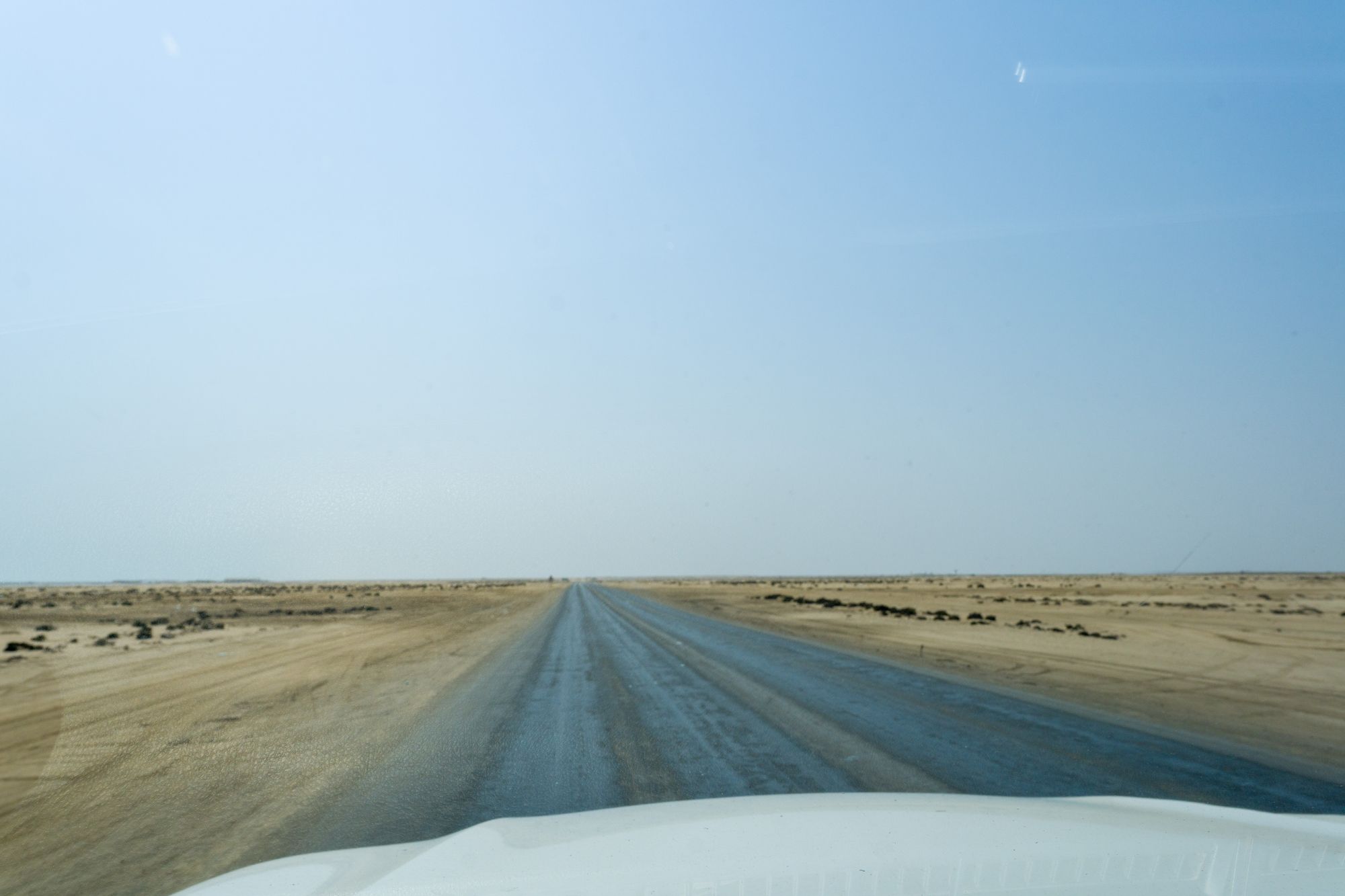Day 7: The Desert near Swakopmund
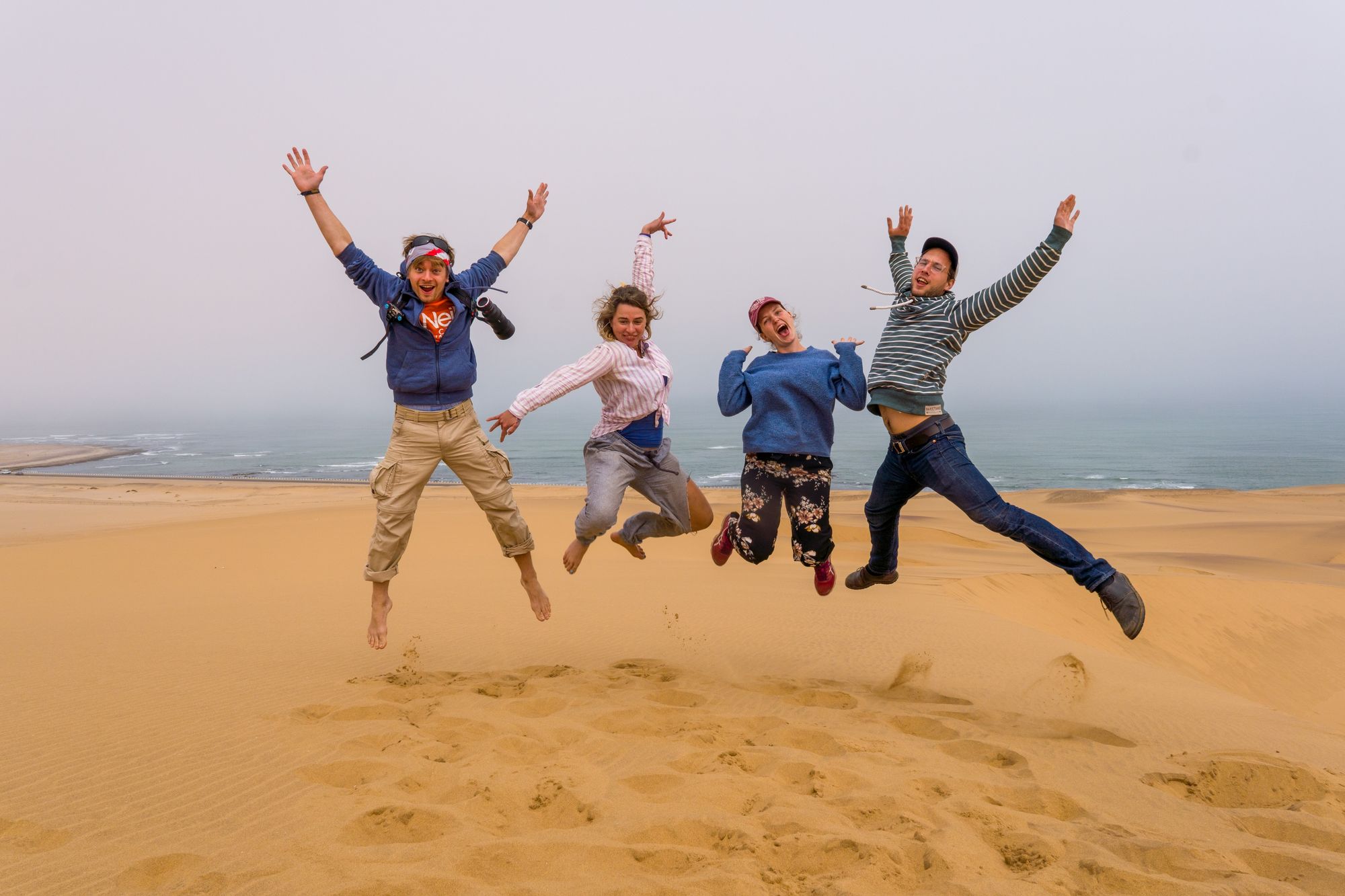
From the "Alte Brücke" camp site we made another early start to arrive at a meeting point at around 8:00 in the morning. There we got picked up by "Tommy's Tours" for a so called "Living Desert Tour" to checkout all the animals living in the sand of the Namib desert. The main attraction are Namibias "little five"
- The white lady spider
- Palmato Gecko
- Lizards aka "Desert Ferraris"
- Sandviper
- Chamelion
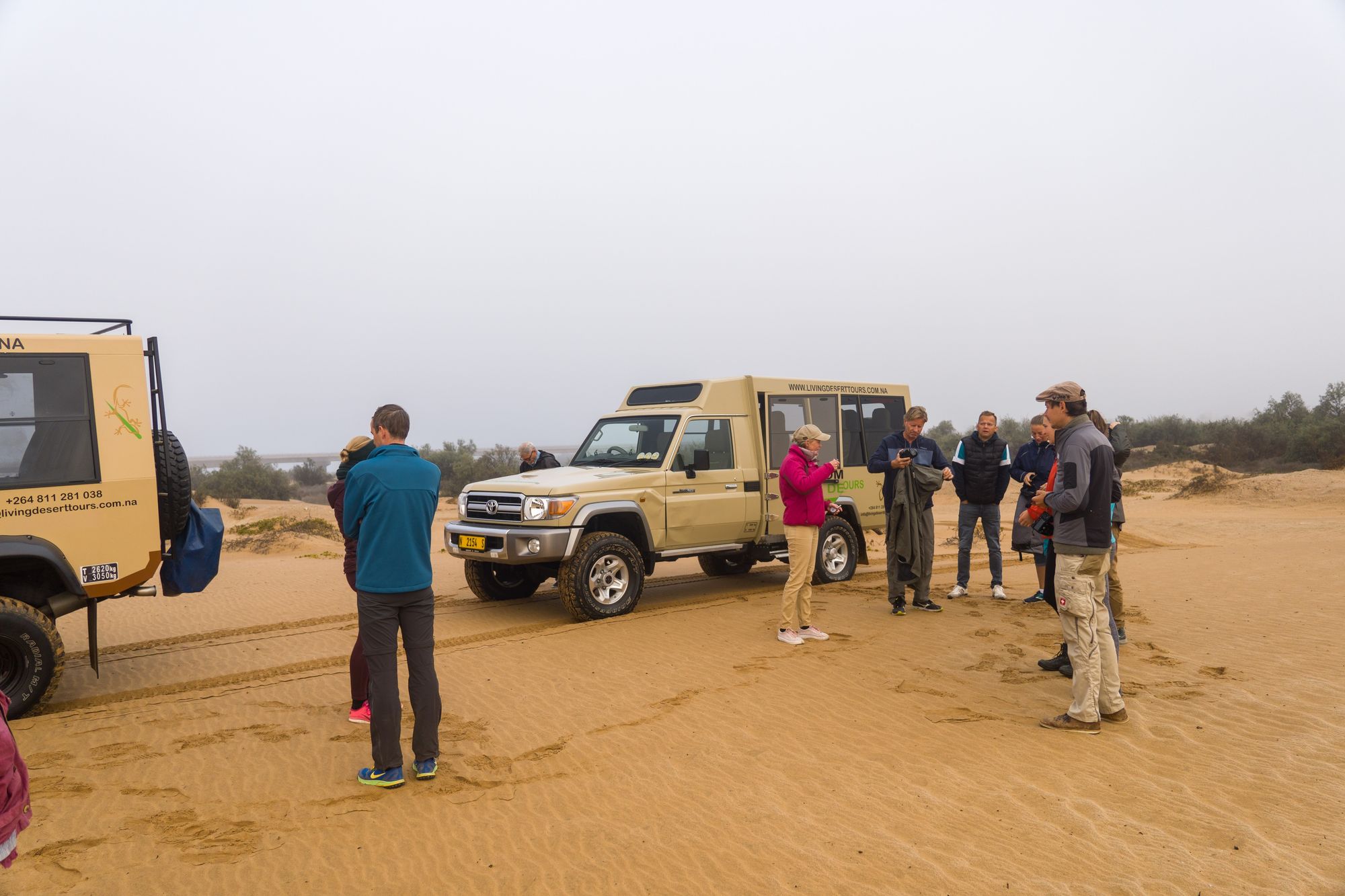
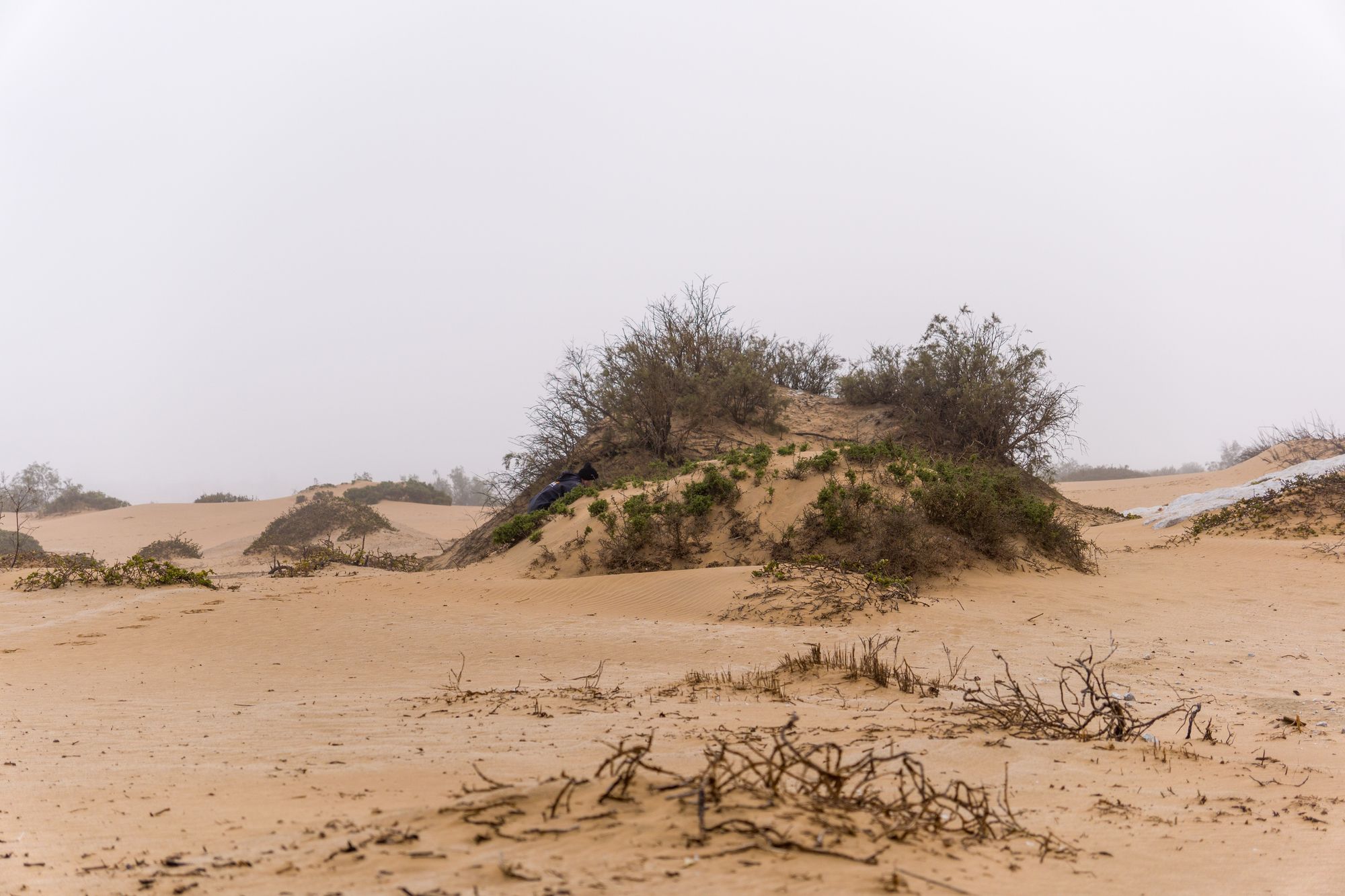
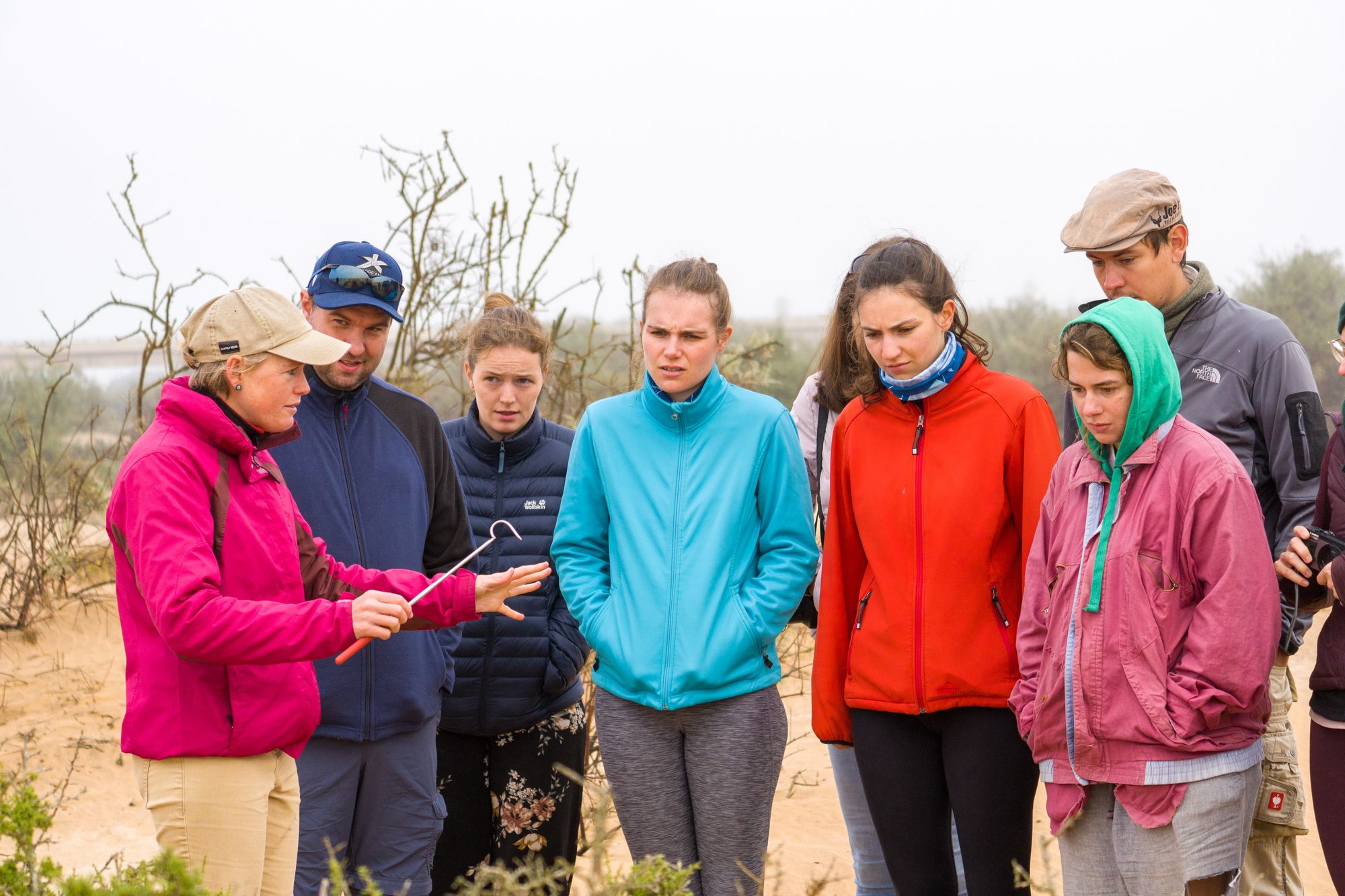
Our guide for the tour was Bianca, who was very friendly and passionate about the desert. Apparently her father was also a rally driver, giving a hint to where her extraordinary desert driving skills might have come from.
The first animal we encountered was a baby sandviper. Their poison is not necessarily deadly to humans, but it is still very nasty. You might loose toe if it bites you. A baby viper has the same amount of poison as a big one, but it cant yet control the amount of poison in a bite. This makes the babies more dangerous, as a big snake might spare the poison, as it just tries to scare you off instead of killing you. The sandviper is also a side-wynder snake, enabling it to move up a sand dune if it needs to.
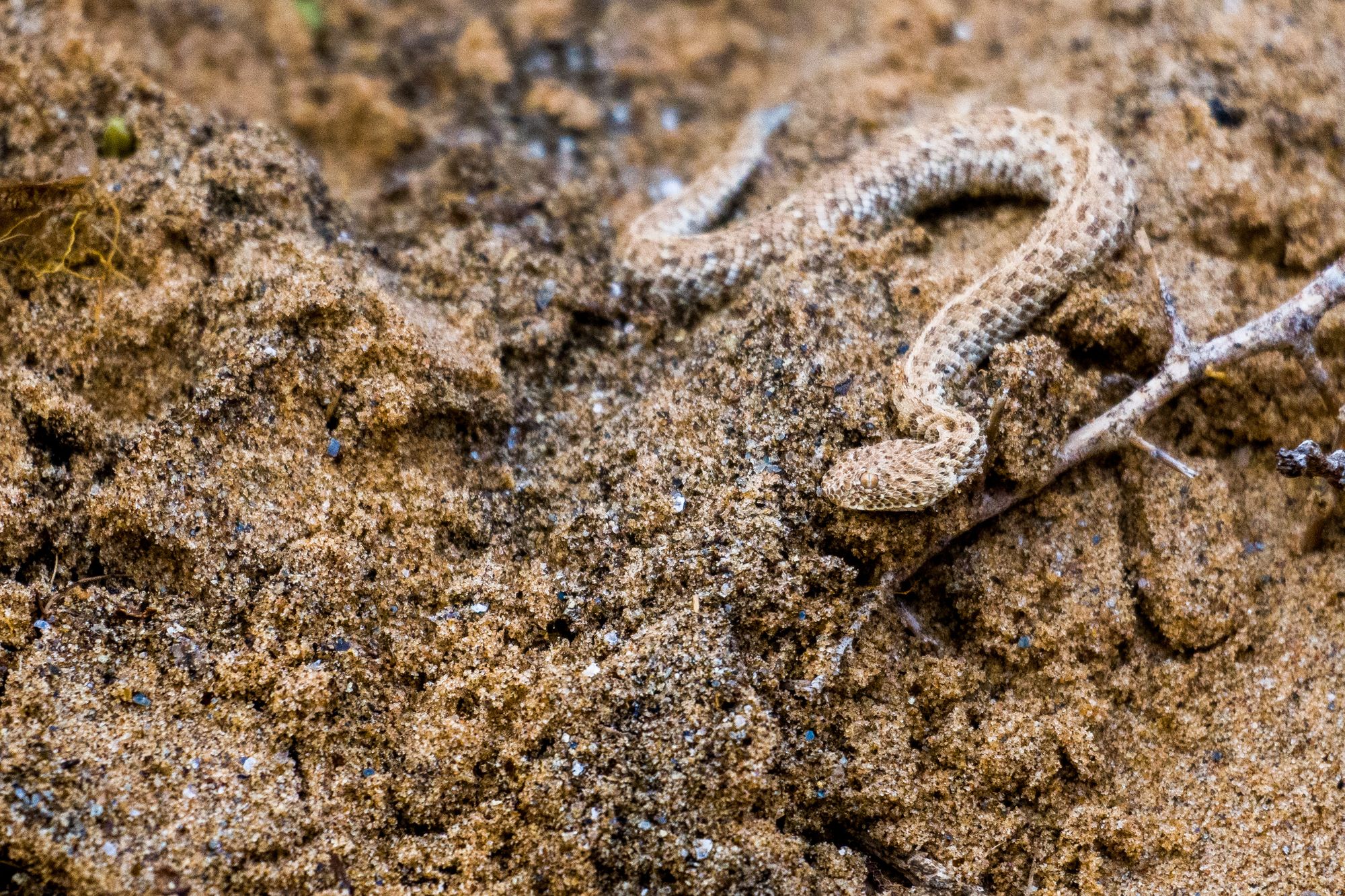
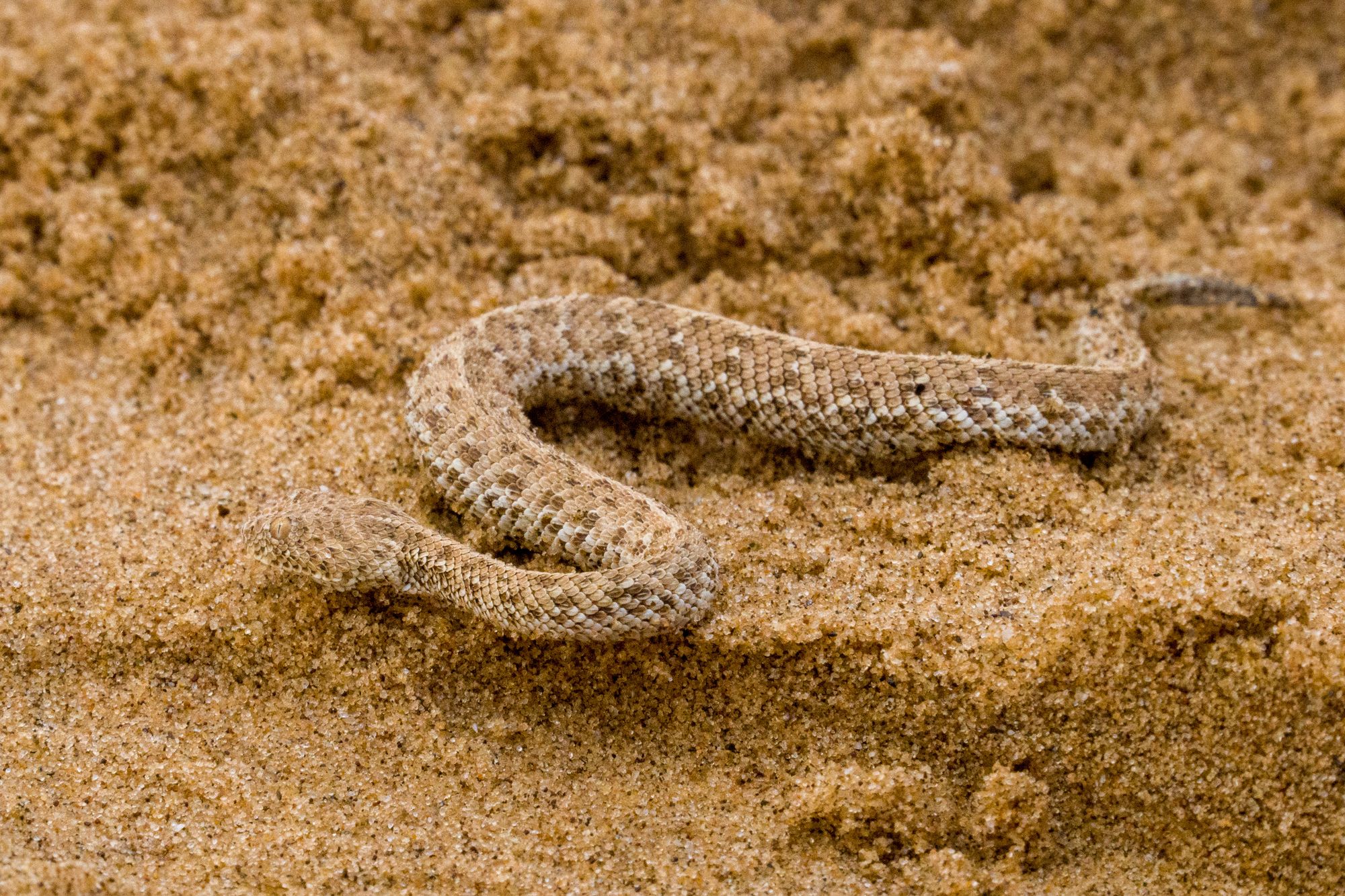
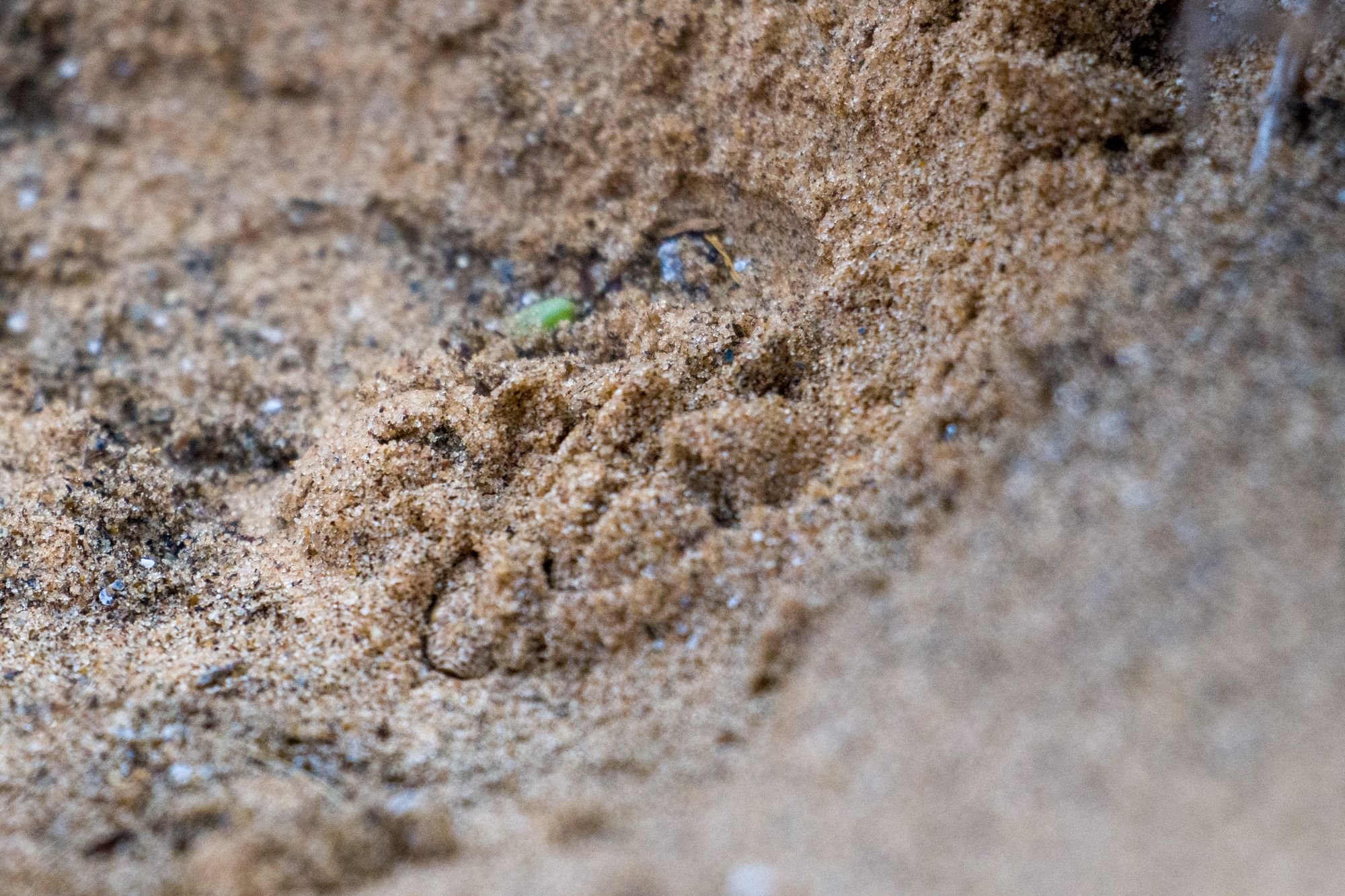
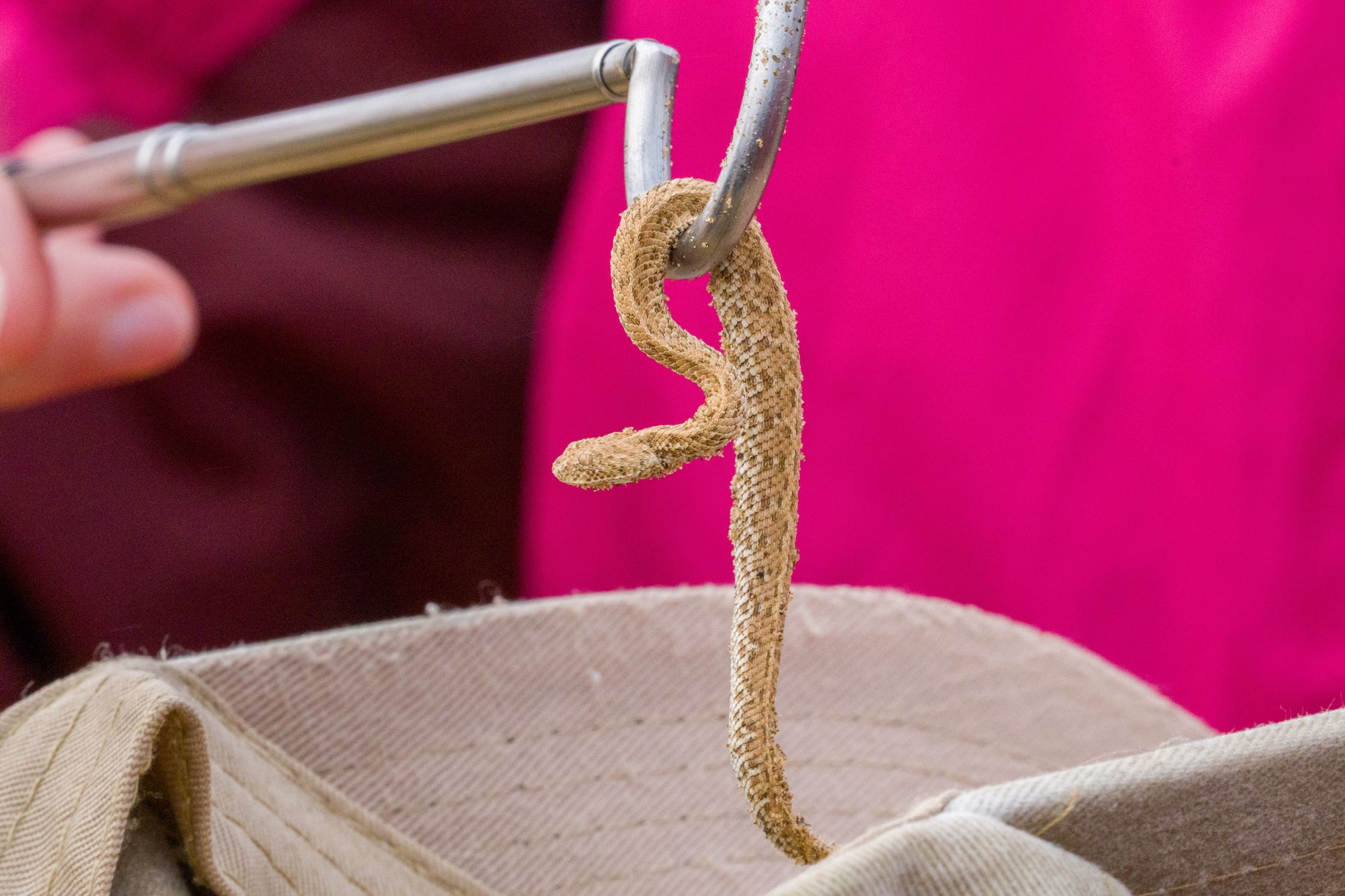
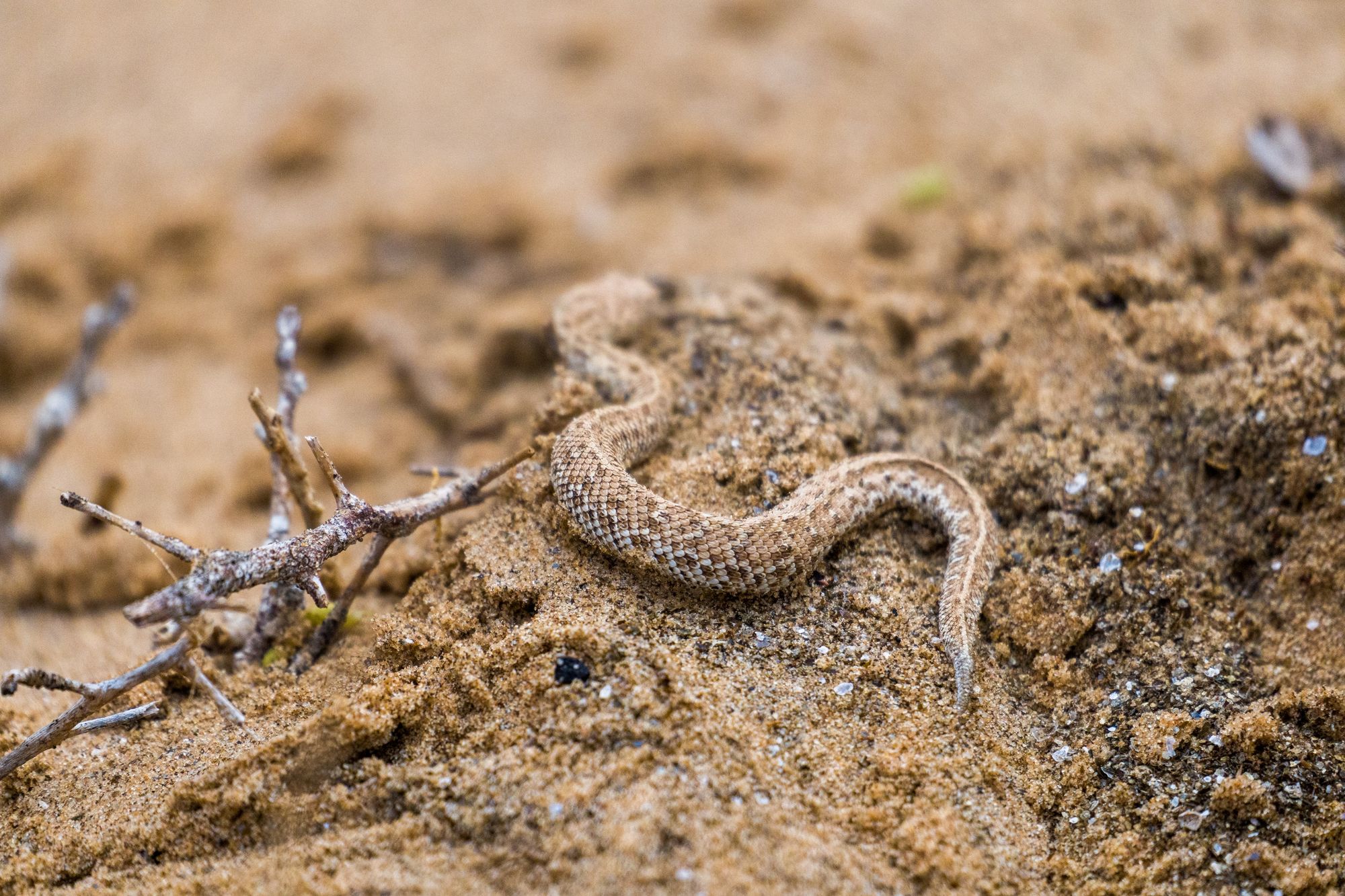
While Bianca was showing us animals and telling us many facts about them and their lives her colleague was roaming the area, searching for spots to checkout next. One of the things that got him exited was a closed hole in the ground. In the desert an empty hole means the animal that used to stay there has left, but a closed hole means it has "closed the door behind itself" and is very likely still in the tunnel it dug. This hole seemed to belong to one of the famous Palmato geckos.
These night active animals are especially pretty as their skin is transparent, revealing their inner organs. Bianca started to dig out the gecko with her hands and after some short moments of uncertainty for us she got him.
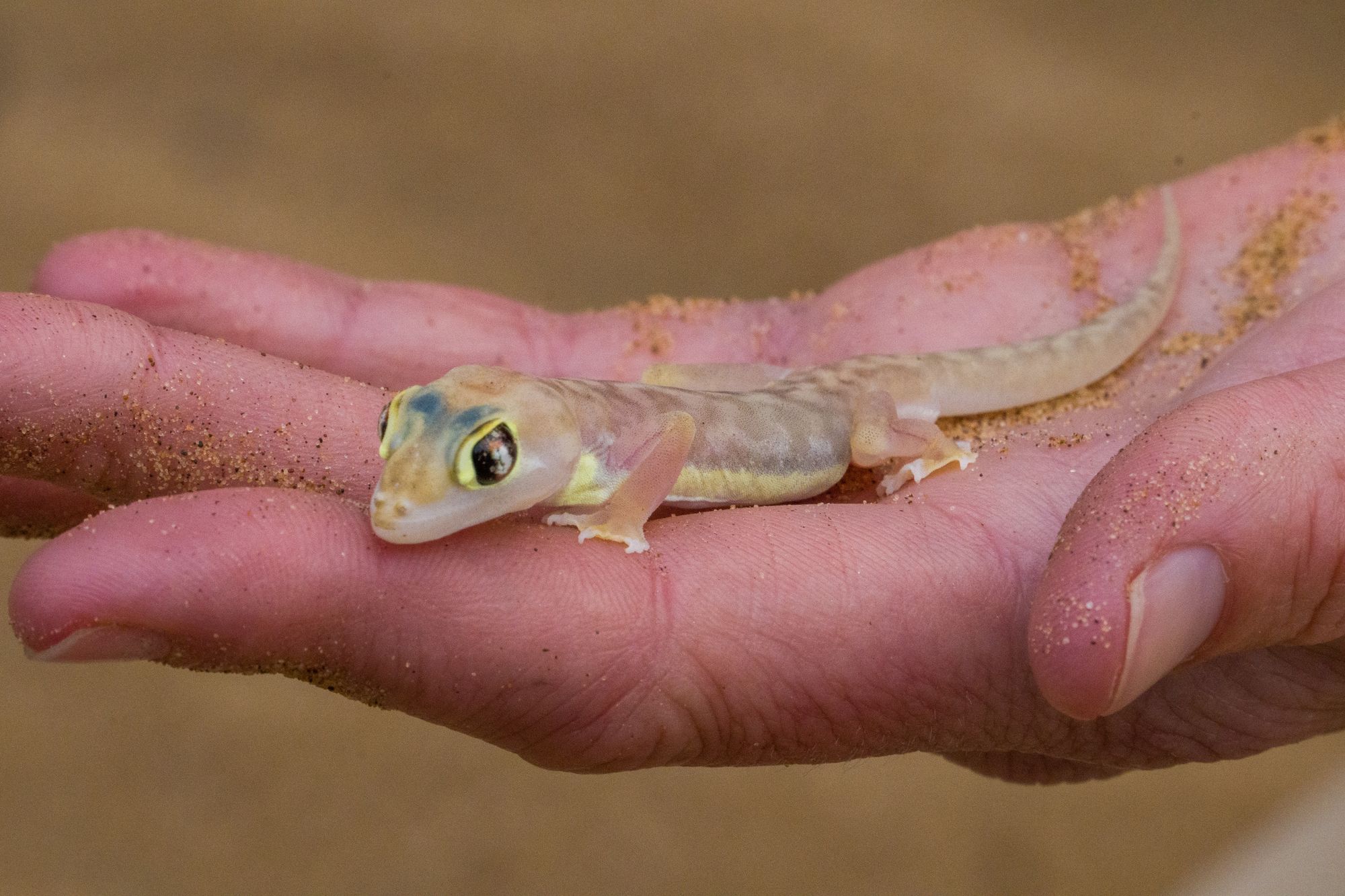
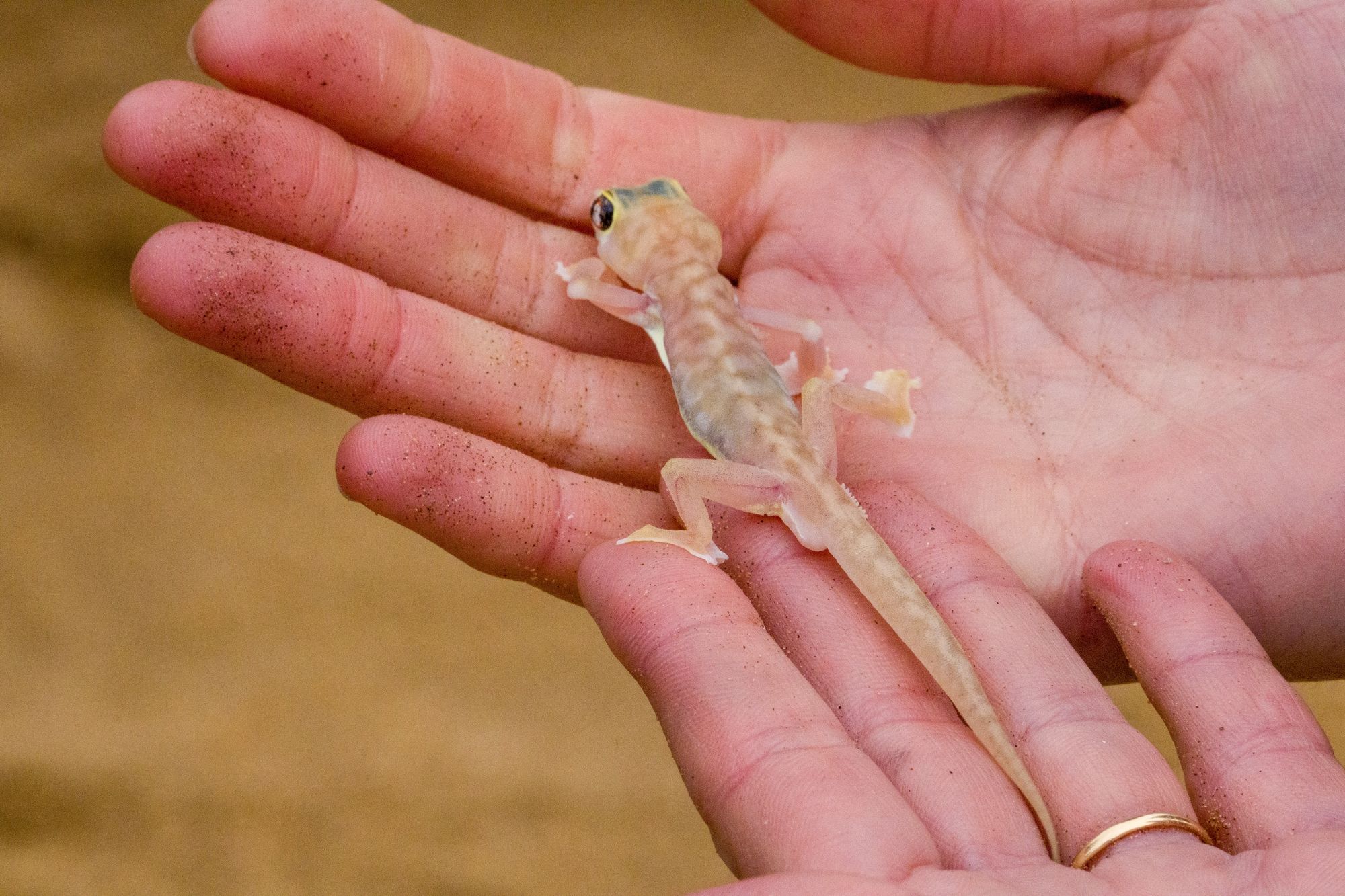
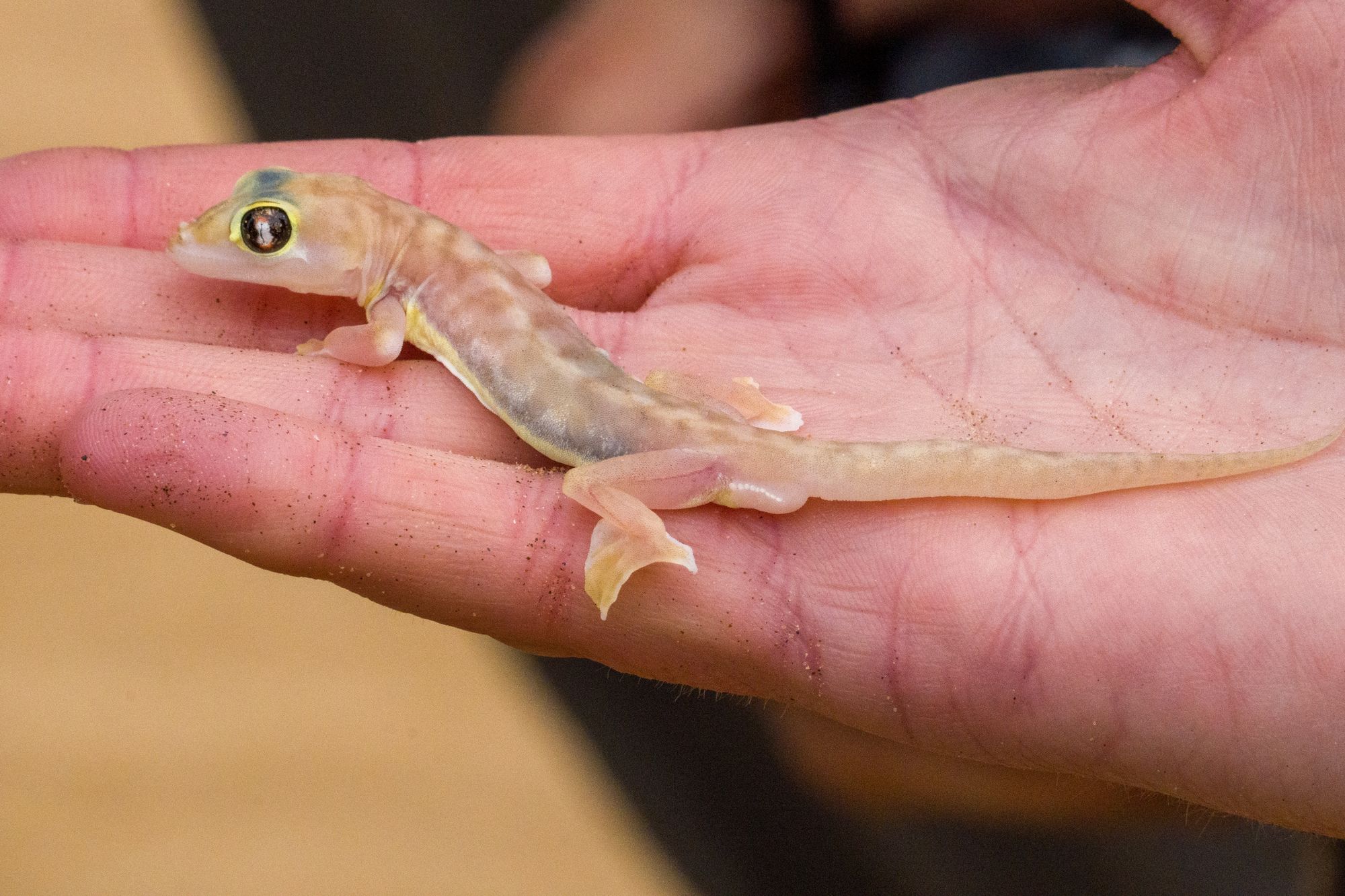
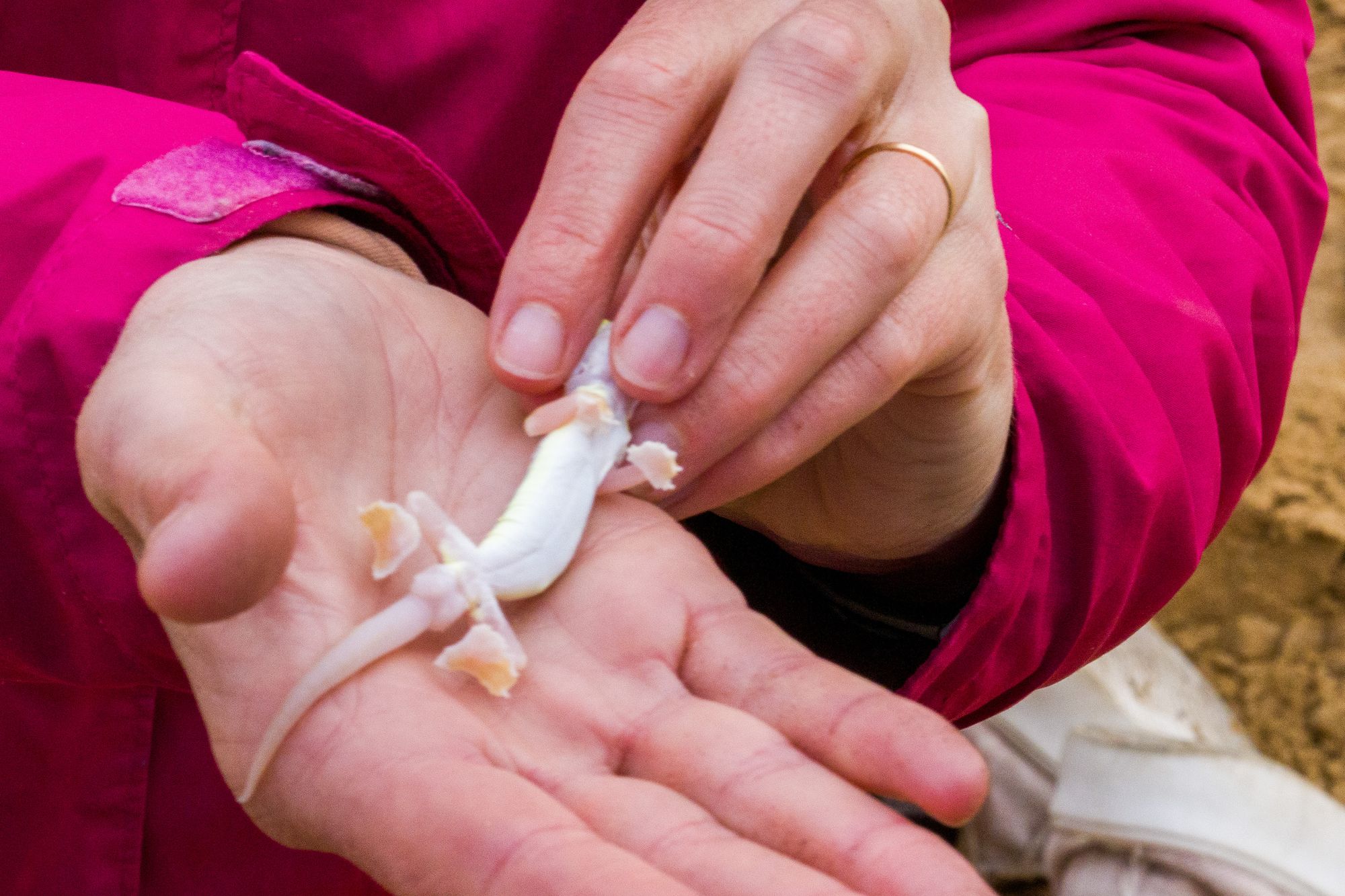
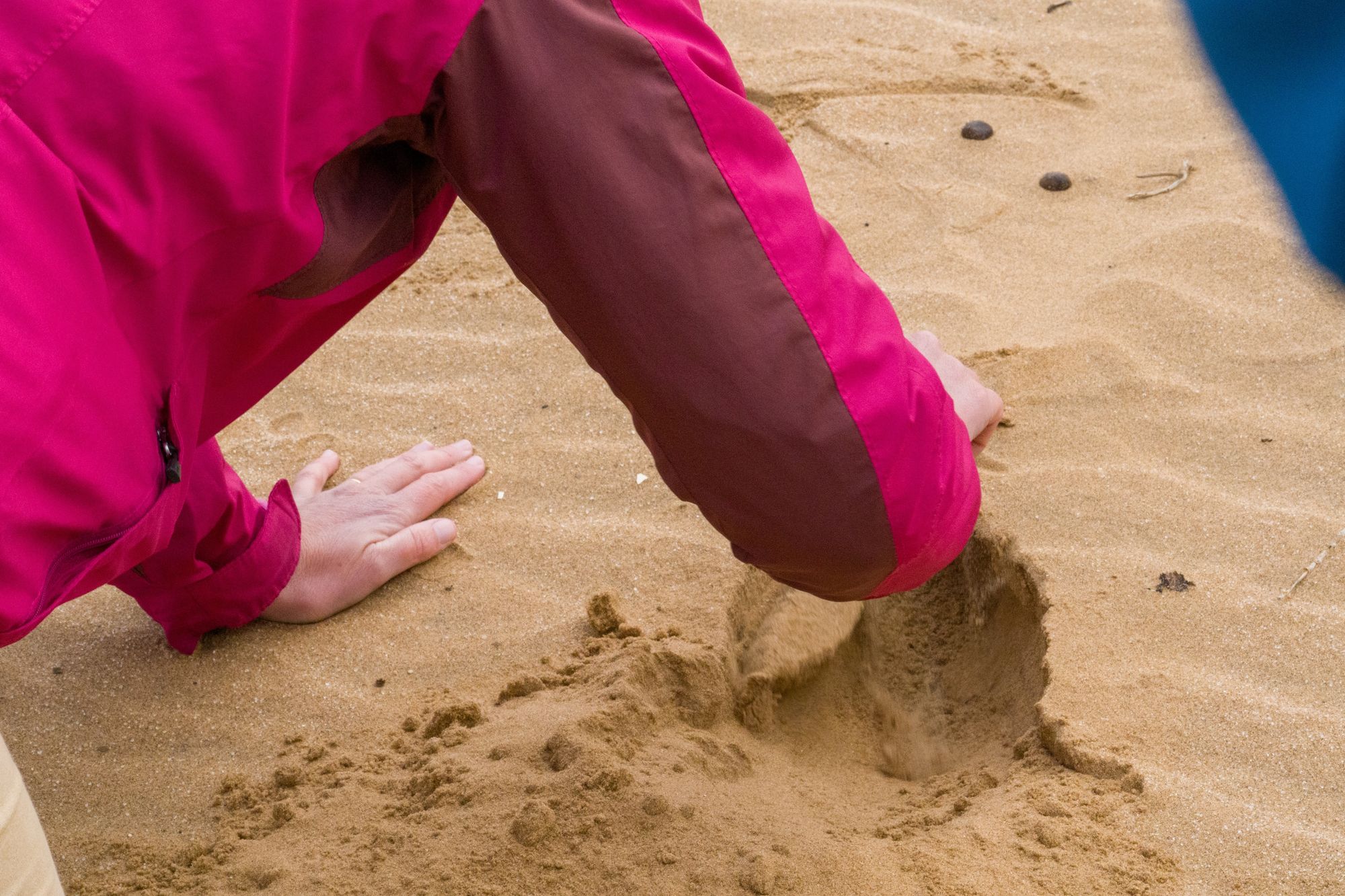
The gecko was really calm in her hand, and she could show us that when flipped it always lands on its feet again, similar to a cat. She also showed us that it has 2 genitals (as all male geckos) and told us about its ability to regenerate its tail.
Moving on we got back into the 2 little tour buses, the guides had already lowered the tire pressure to ease the driving in the sand, and we headed further on into the sand.
Occasionally Bianca stopped and checked the area, calling us out of the car if she had found something interesting. We also stopped a few times so she could pickup some waste and collect it.
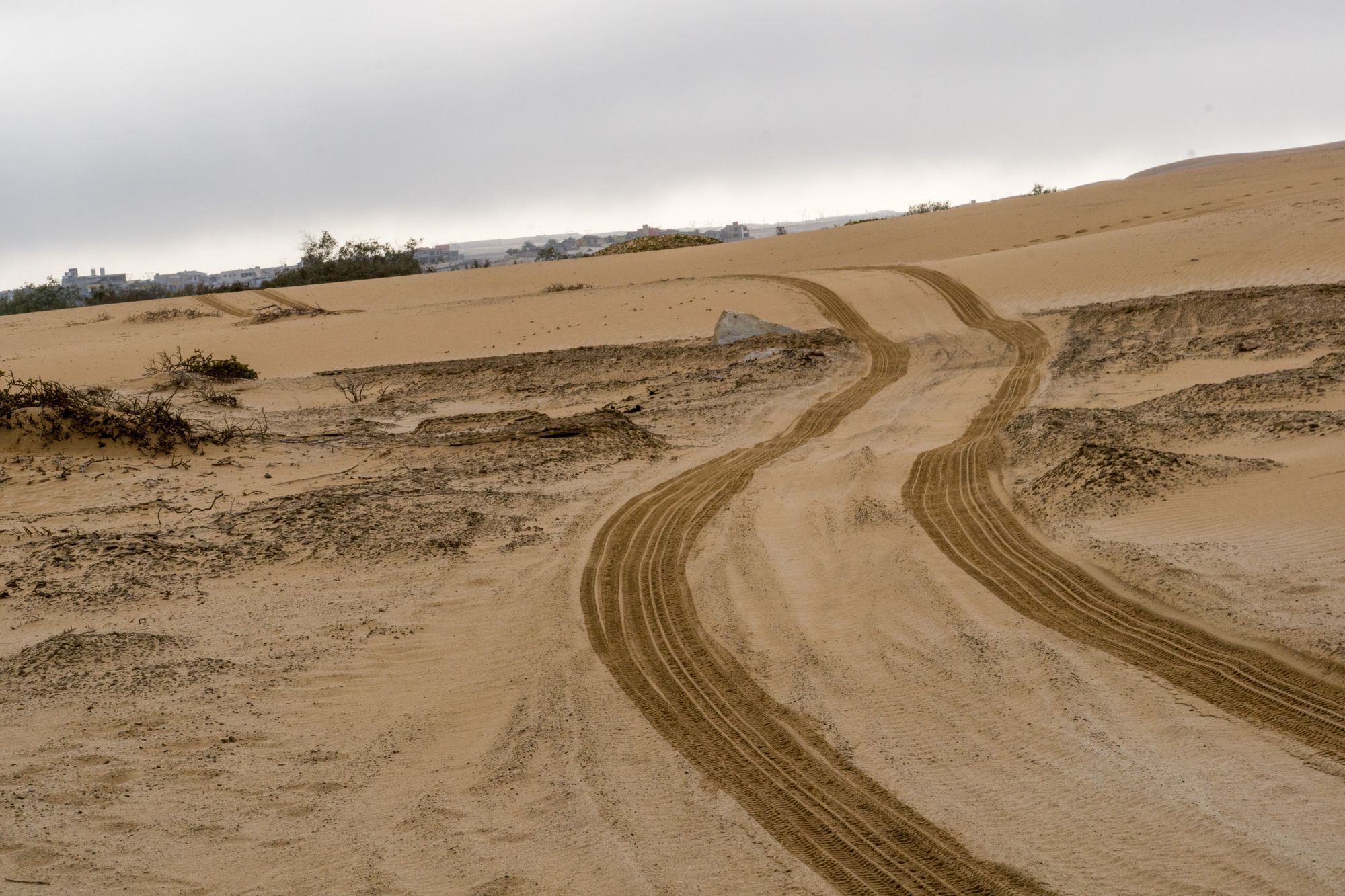
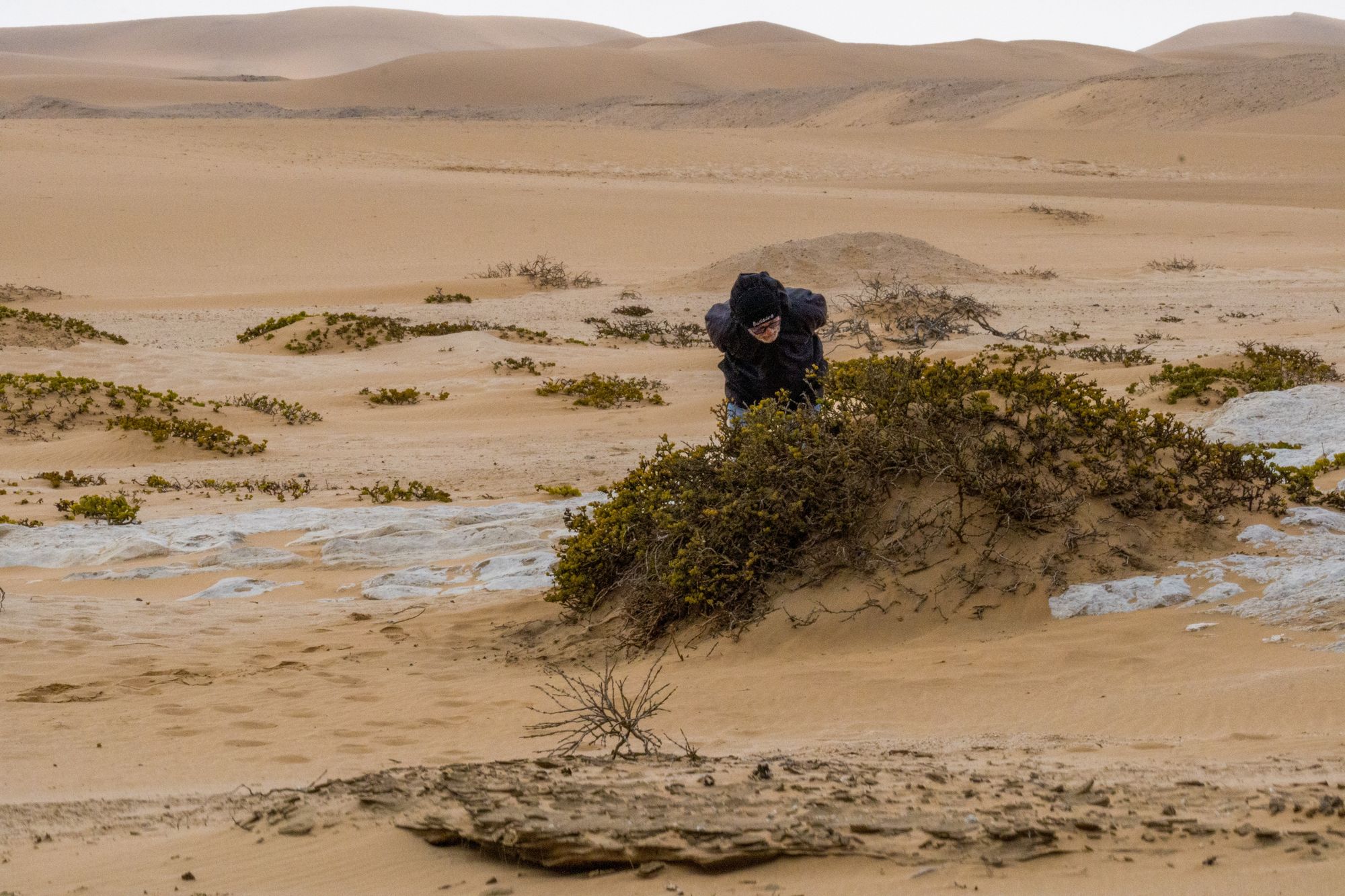
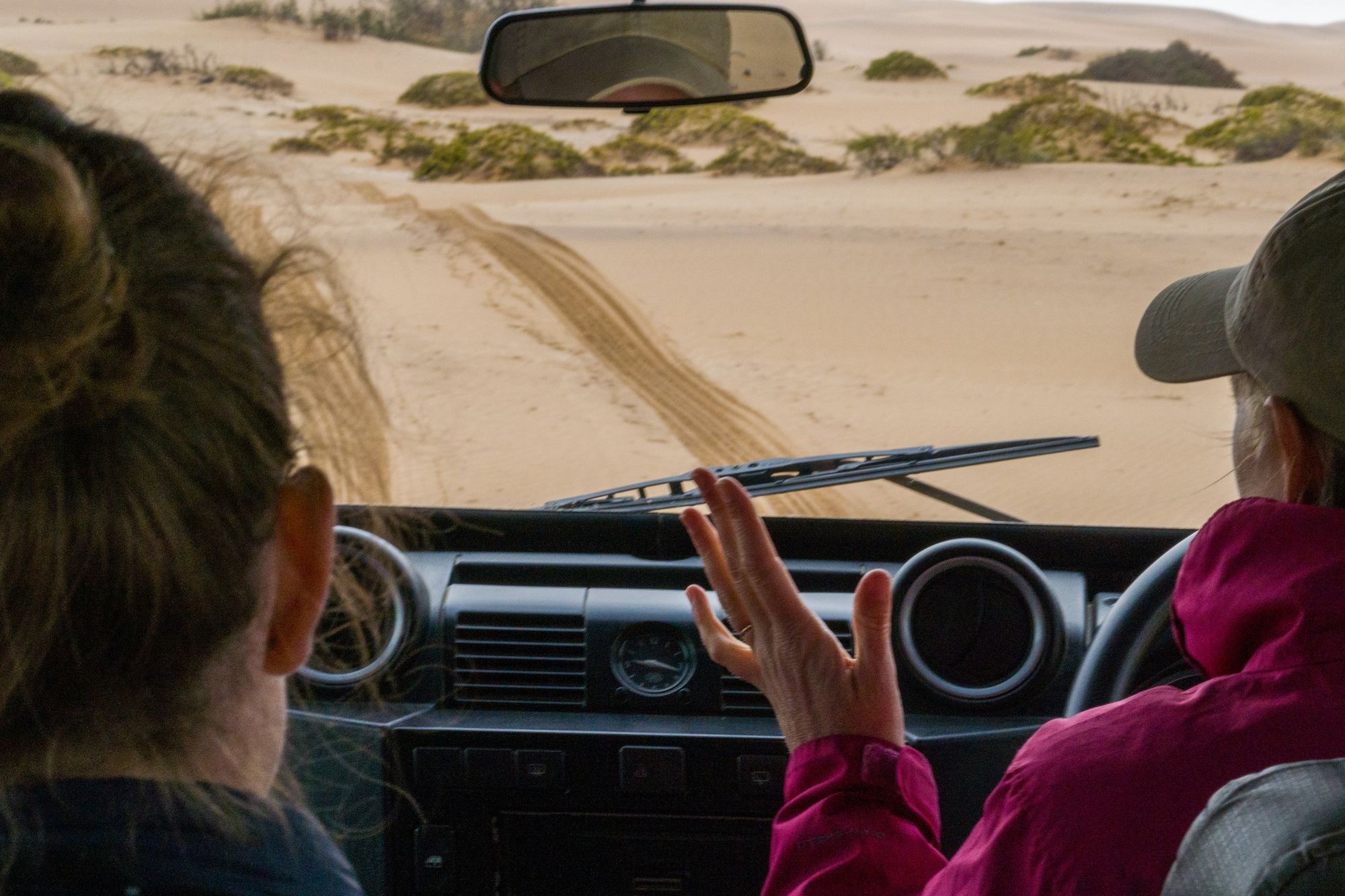
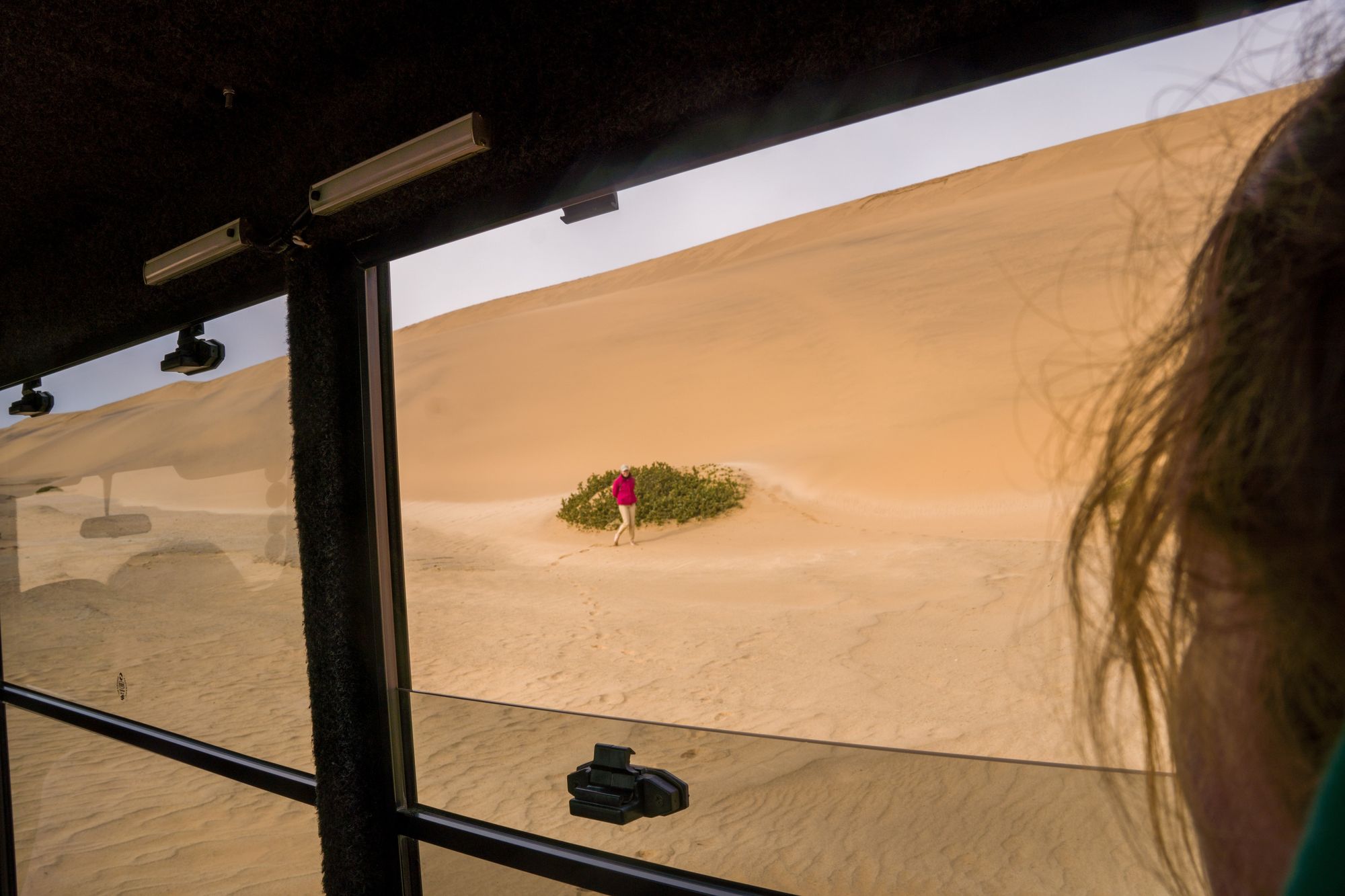
Lots of the plants we saw where so called "dollar bushes" a succulent plant that stores a lot of water. It is one of the main sources of liquid for the animals here. Another one is the Tok-Tokie Bug, that can drink the water that condenses on its body in the morning fog. Bigger animals eat the bug and get their liquid this way. We also saw the tunnels of the white lady spider, consisting of spider web structure. To hunt the spider throws out little sand balls with a spiderweb attached, to serve as a trap for other animals.
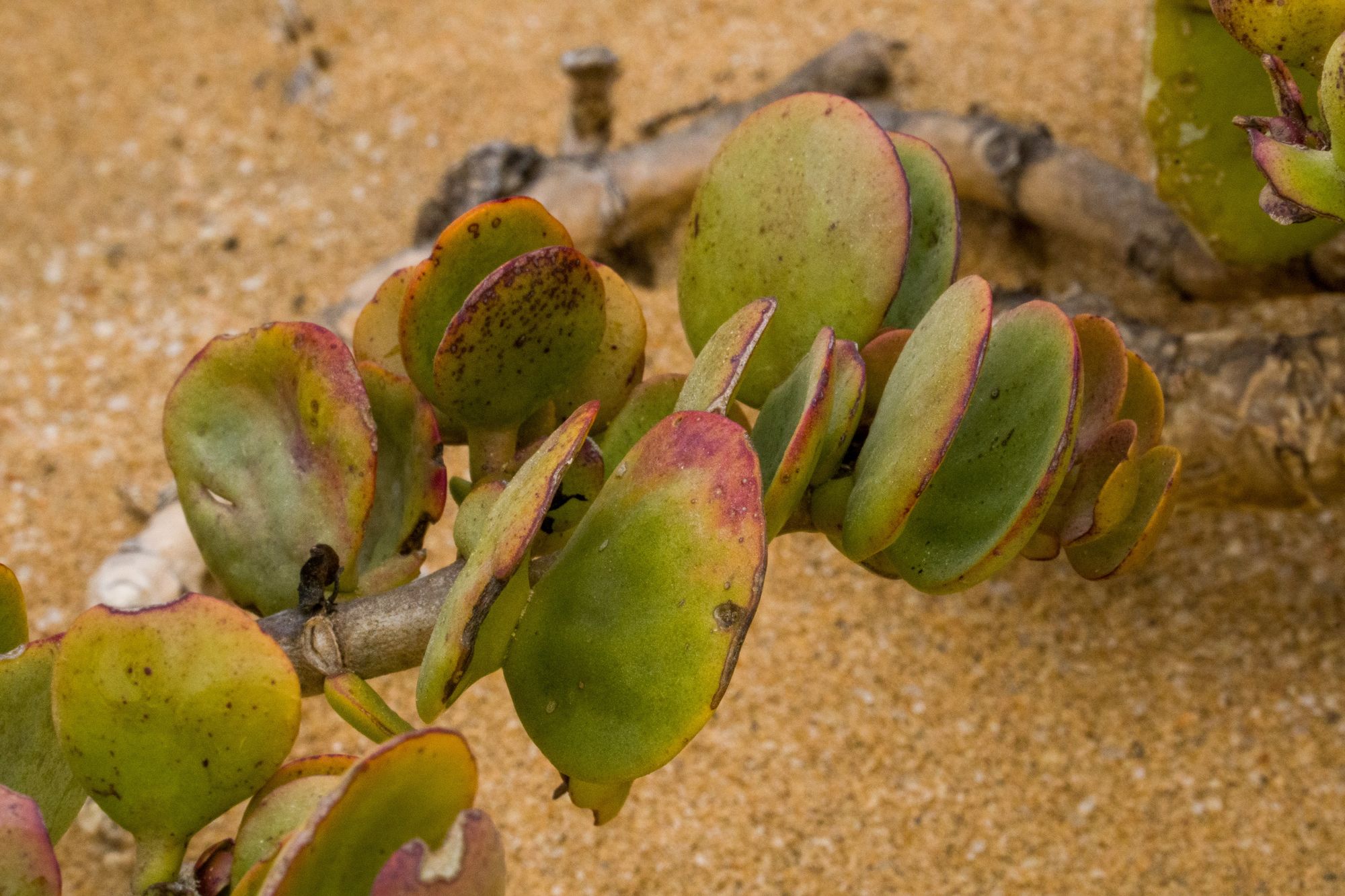
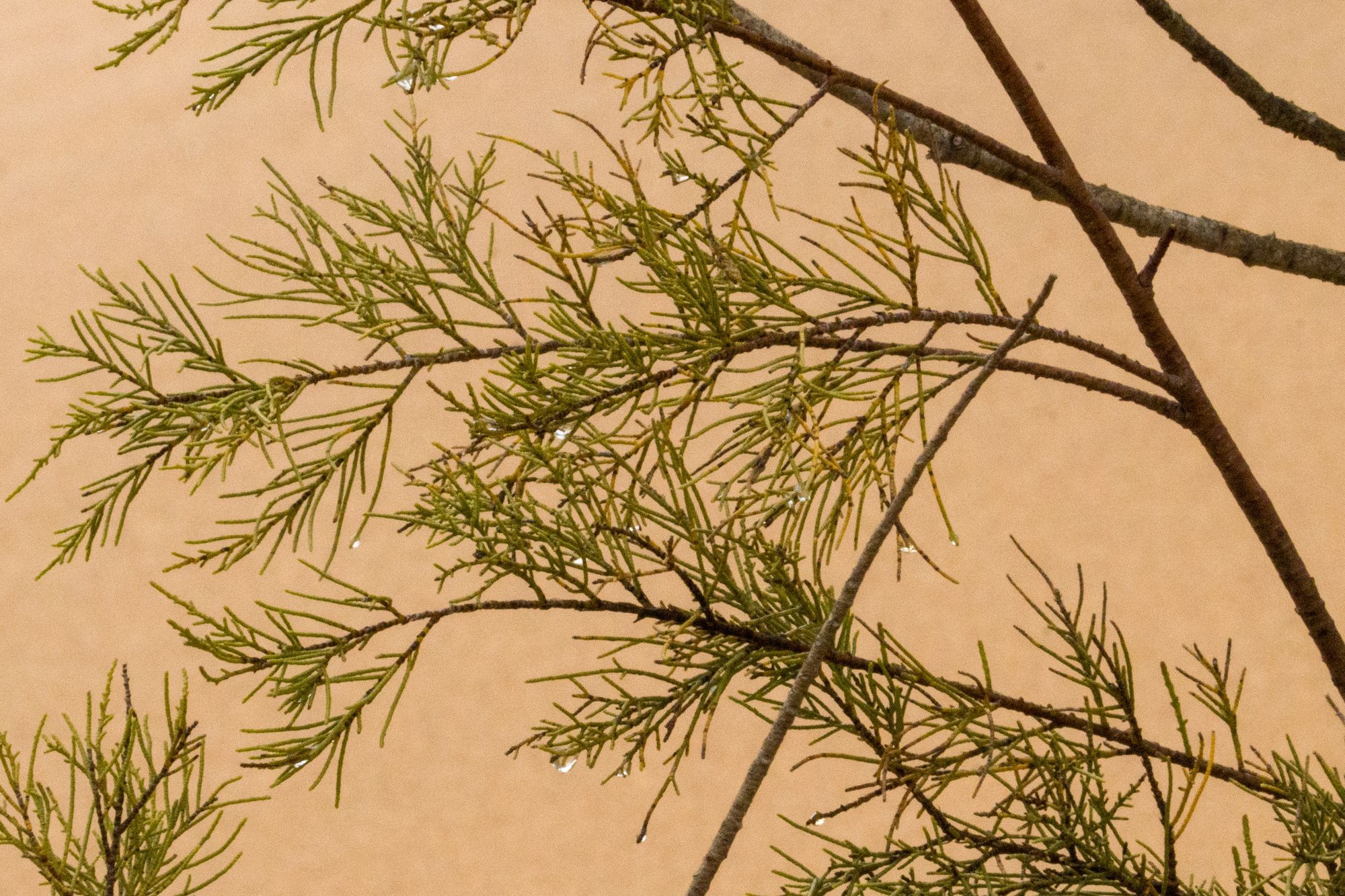
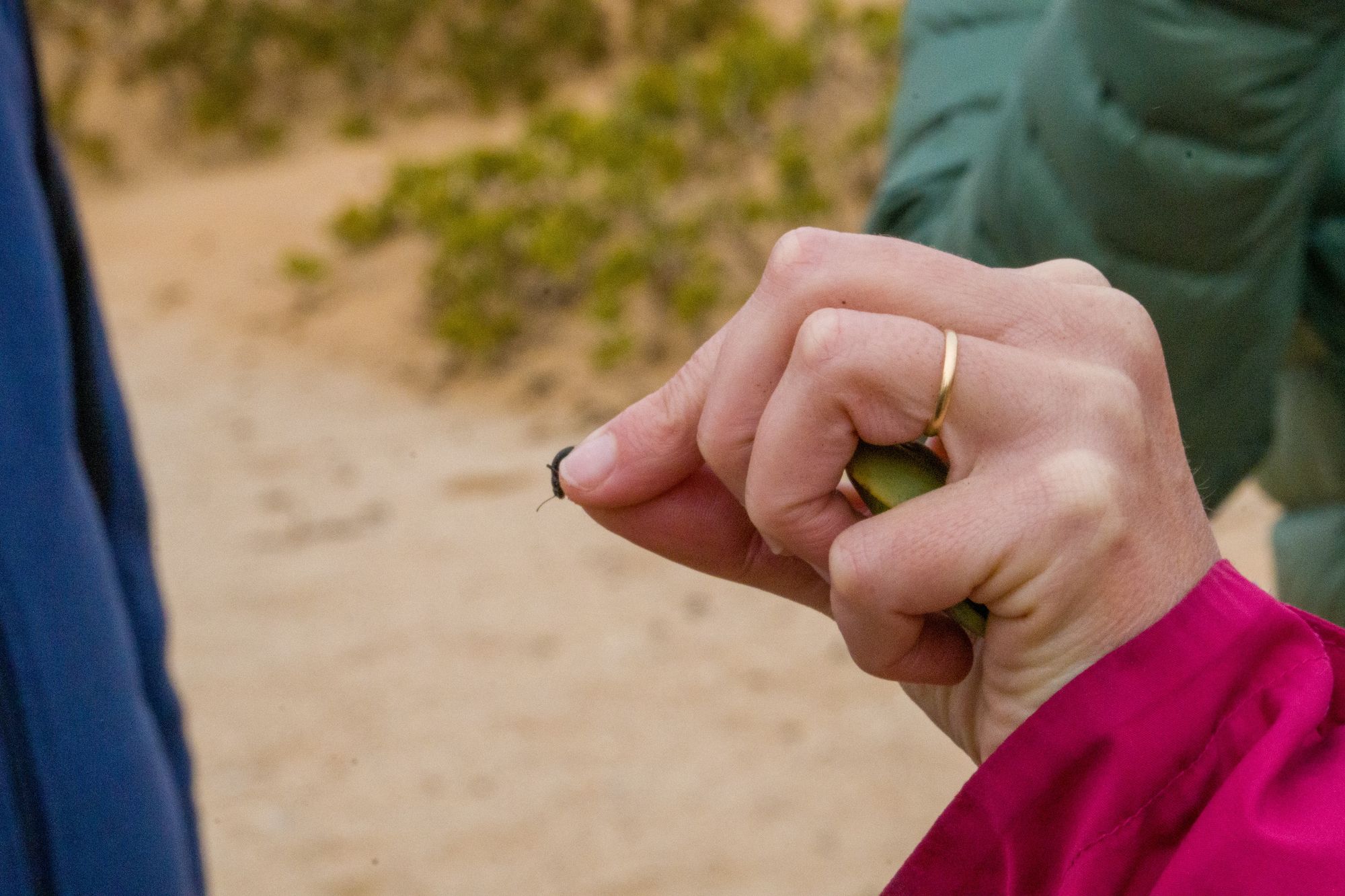
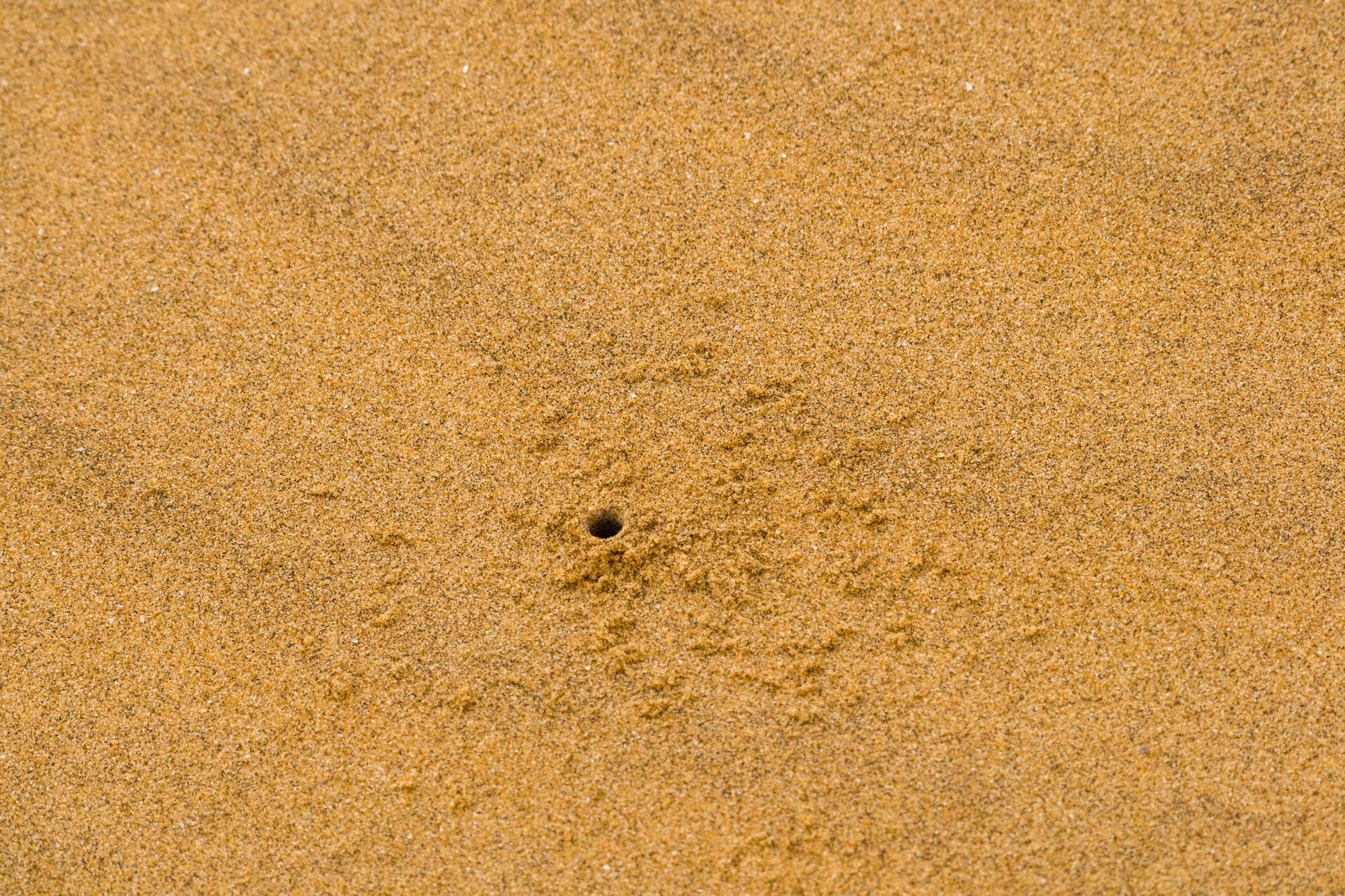
Another highlight was a fully grown horned viper. It has been around in the area for a month or two and we also got to see it. It usually lives in the stone field areas of the desert, less likely in the sand.
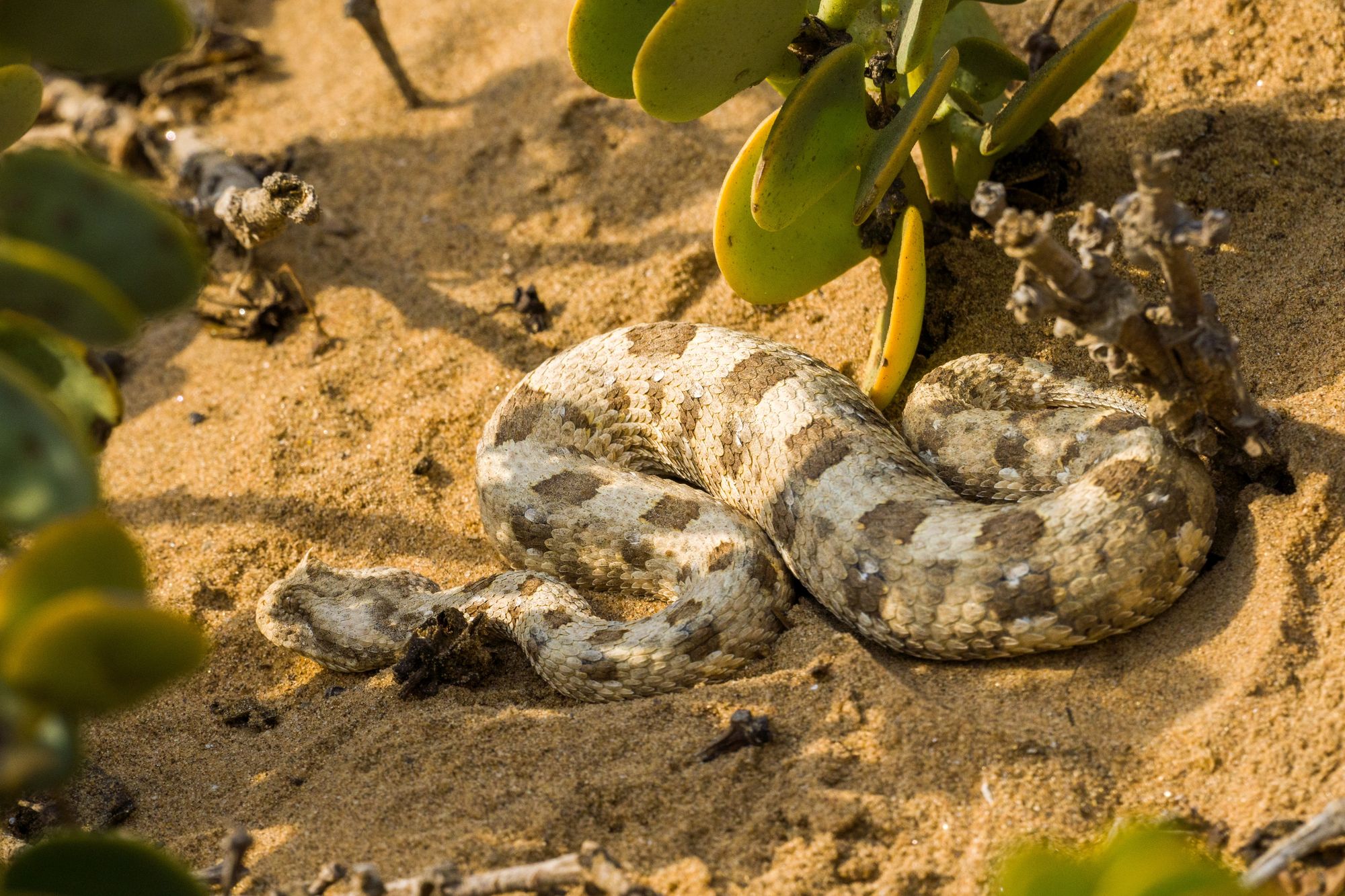
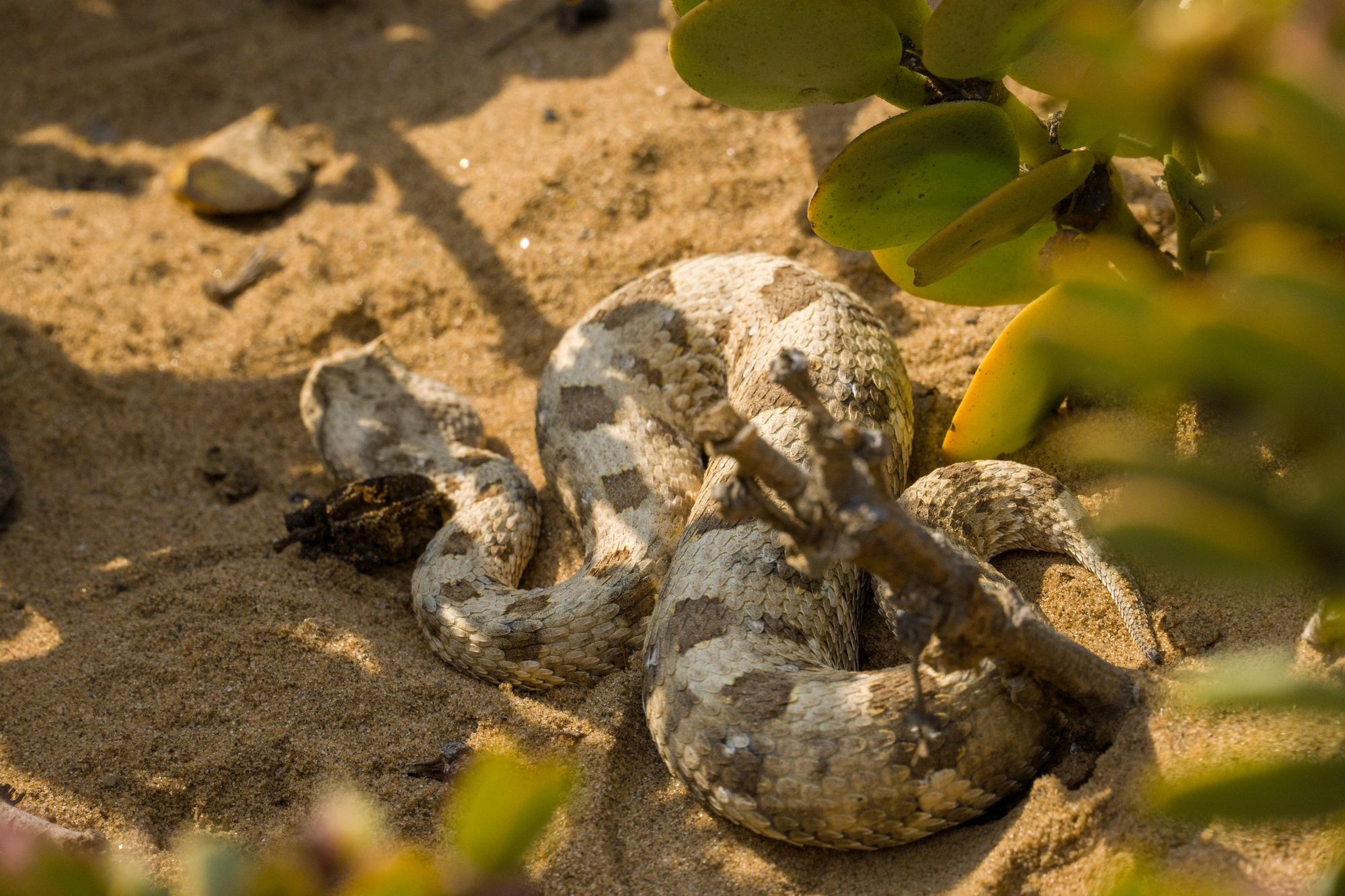
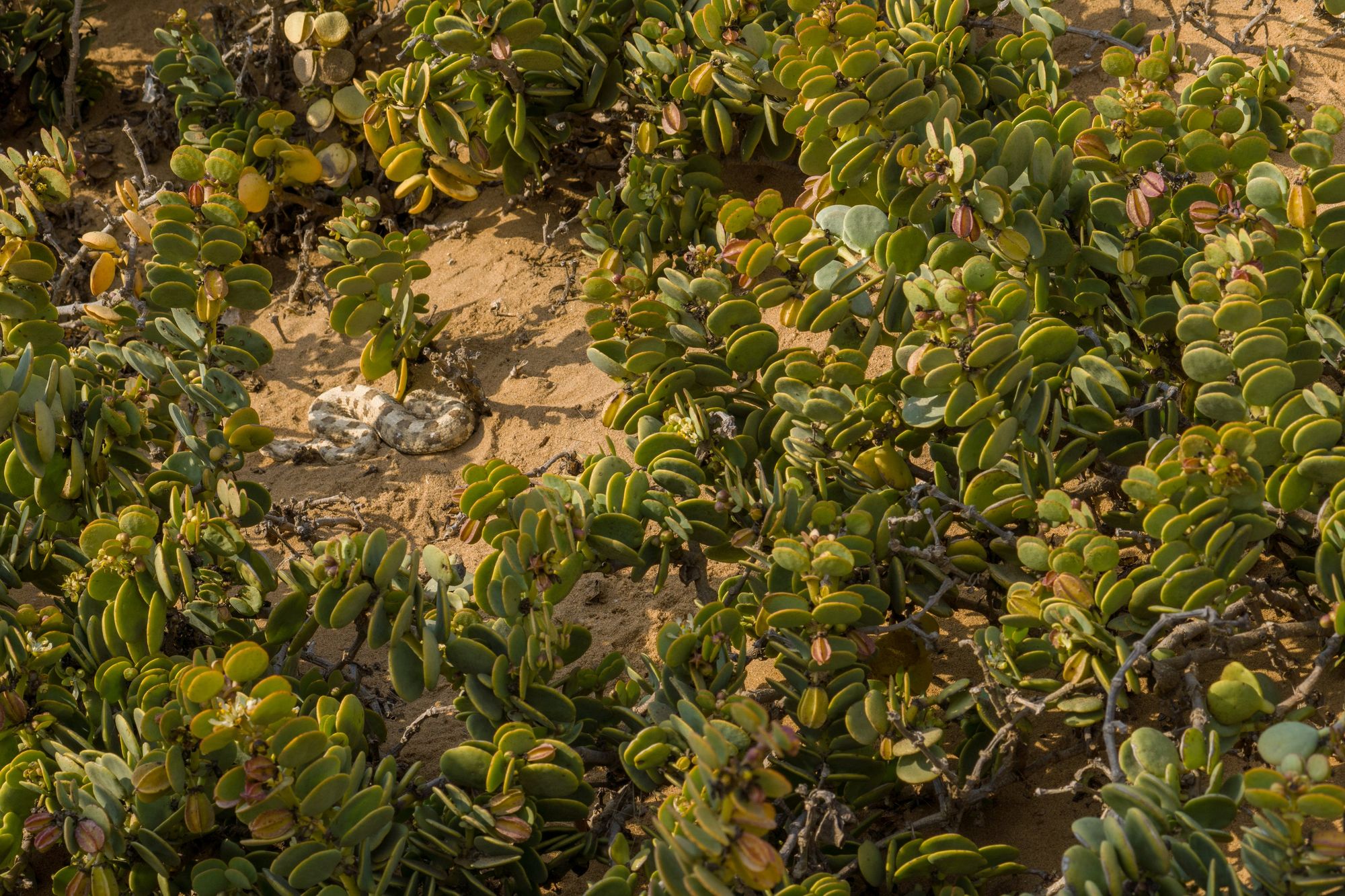
On to the next of the "little five" Bianca managed to catch one of the very fast running lizards in the dunes. To do that she threw her hat, so the lizard thinks a bird is approaching. To hide it dug itself into the sand and Bianca could quickly dig it out again. After showing us the animal she also made sure to put it back to the same spot, as these lizards have very precisely defined territories.
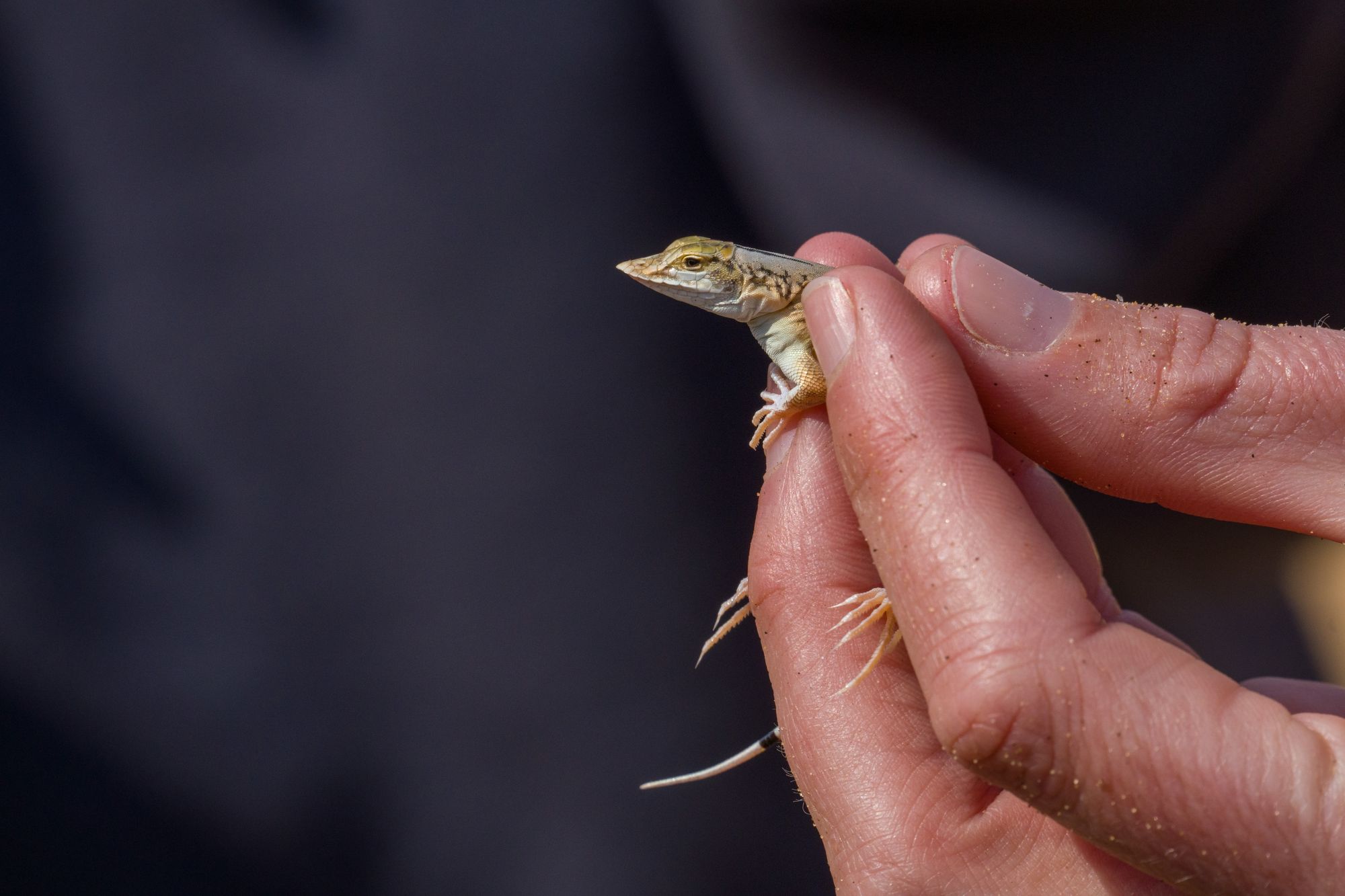
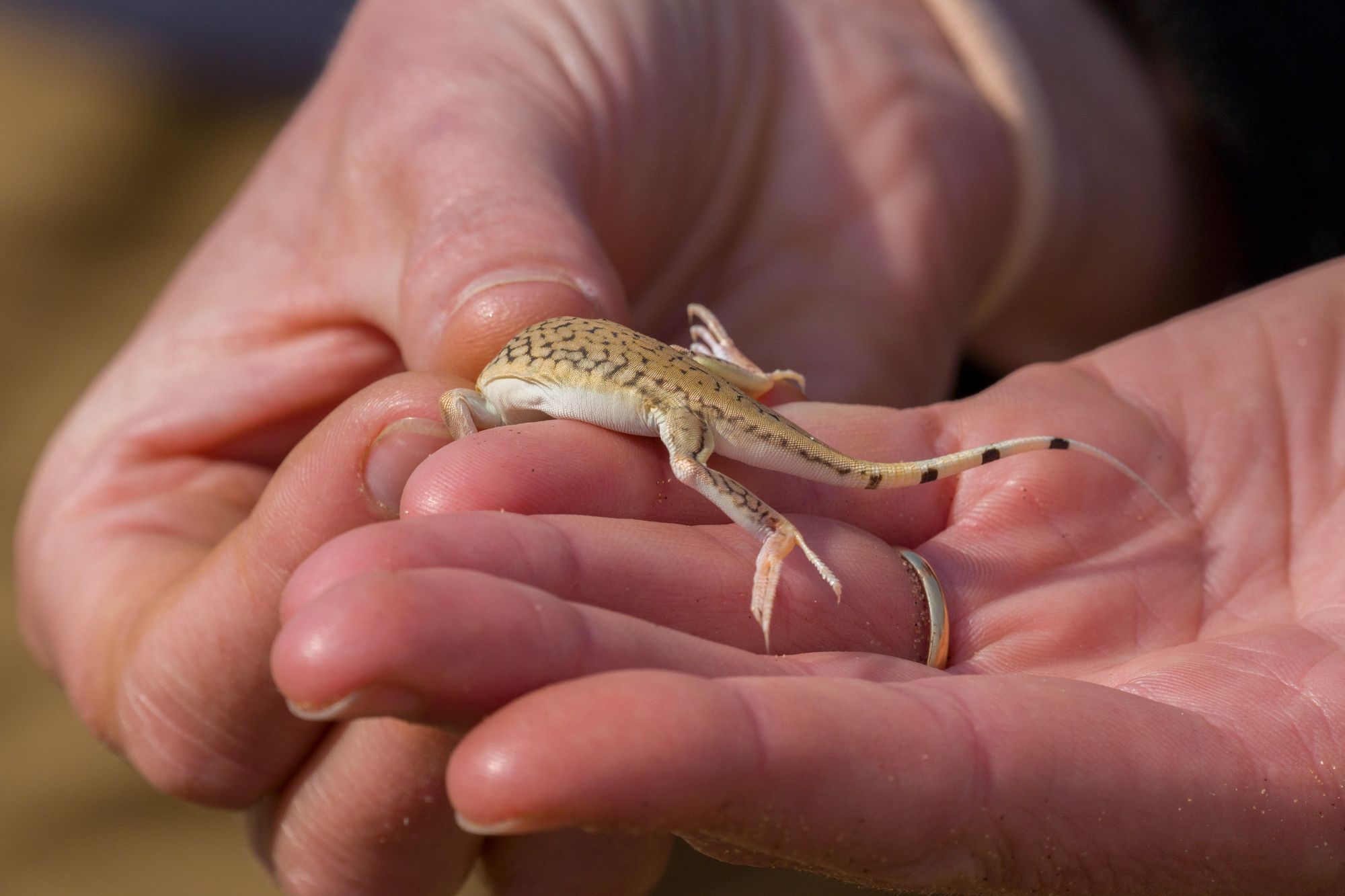
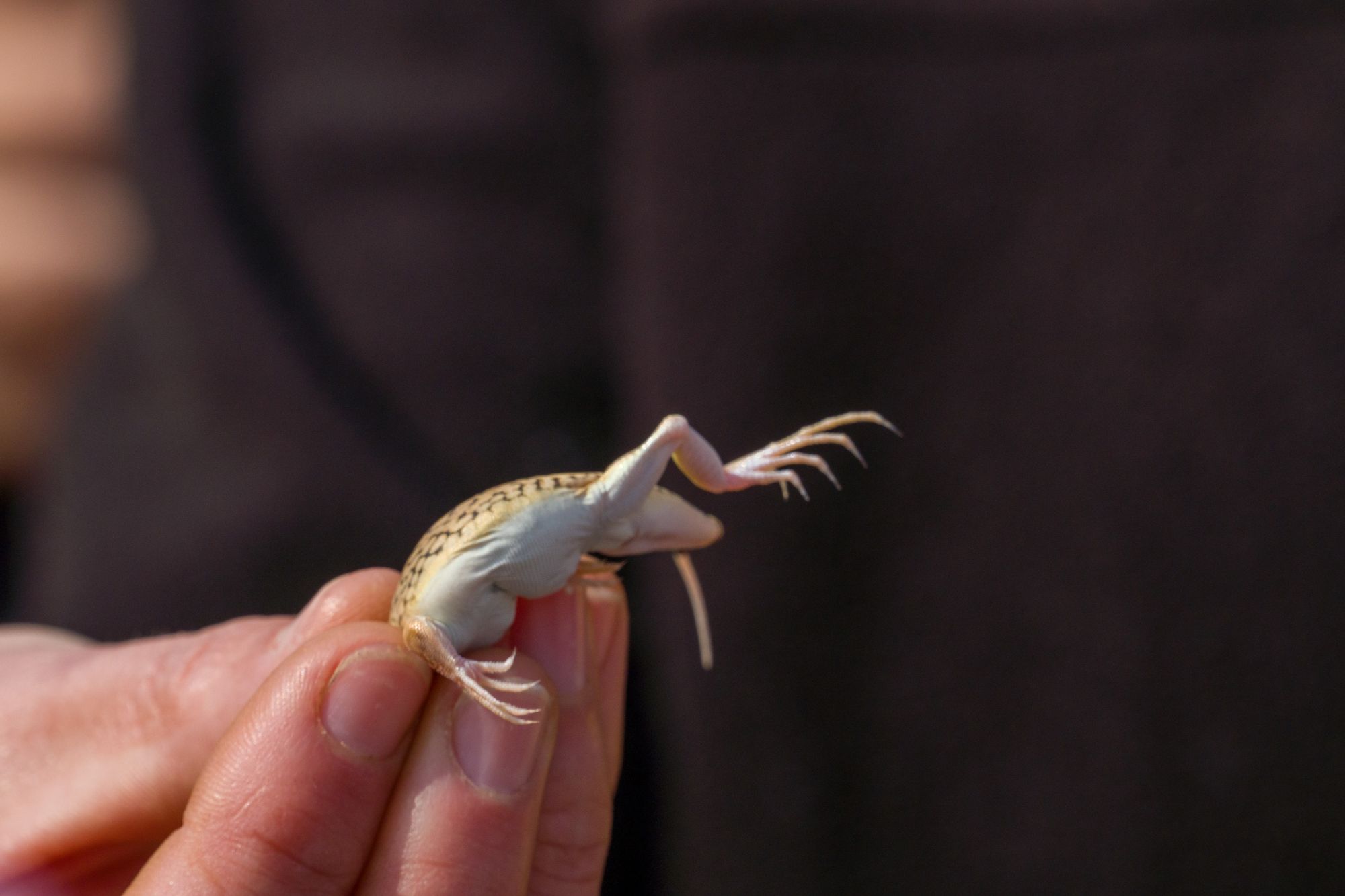
One time we stopped at a dune with a great view over the area. As we where so close to Swapokmund still we even had LTE there. Several birds where also checking if there is something to get from us.
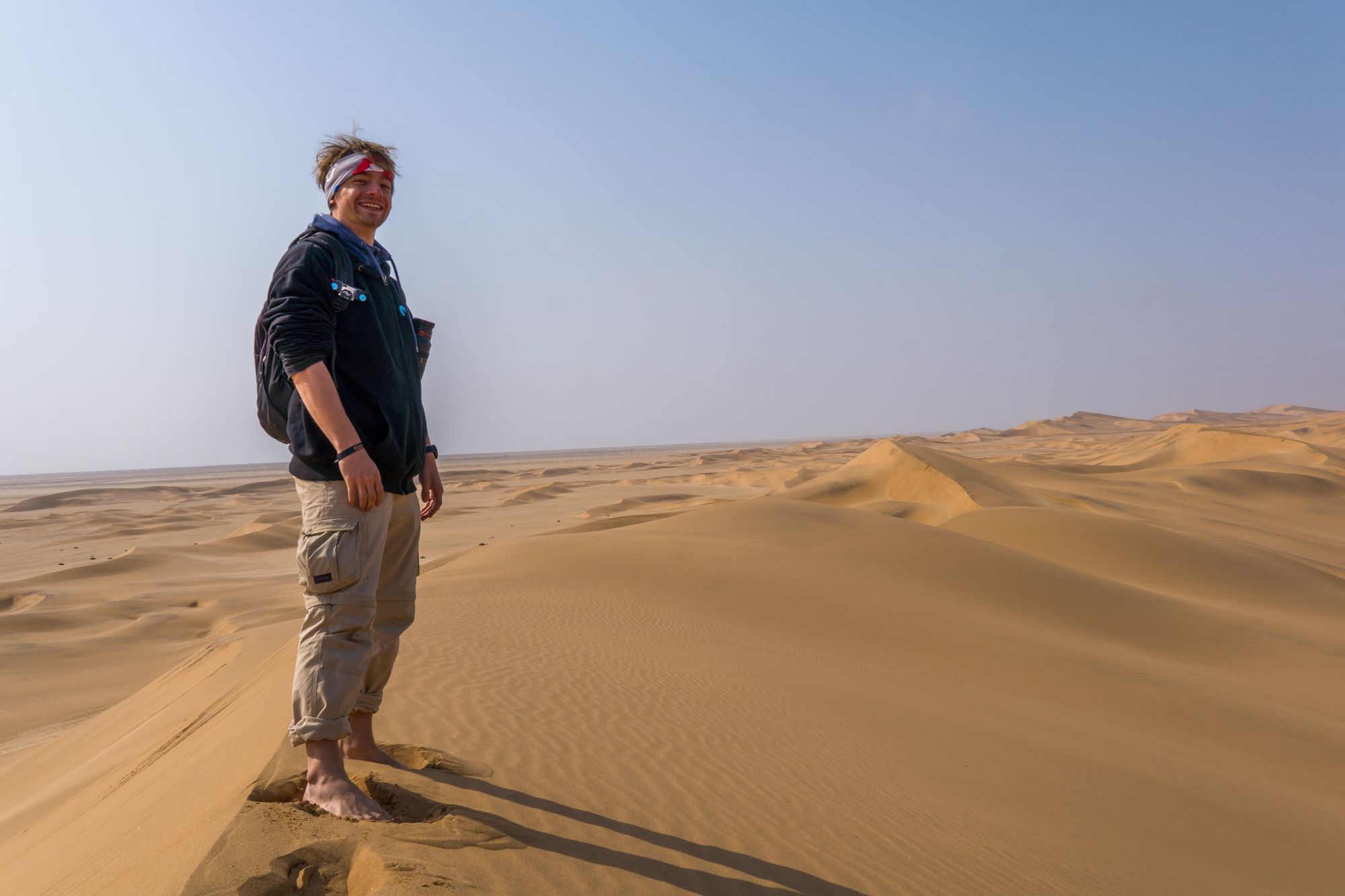
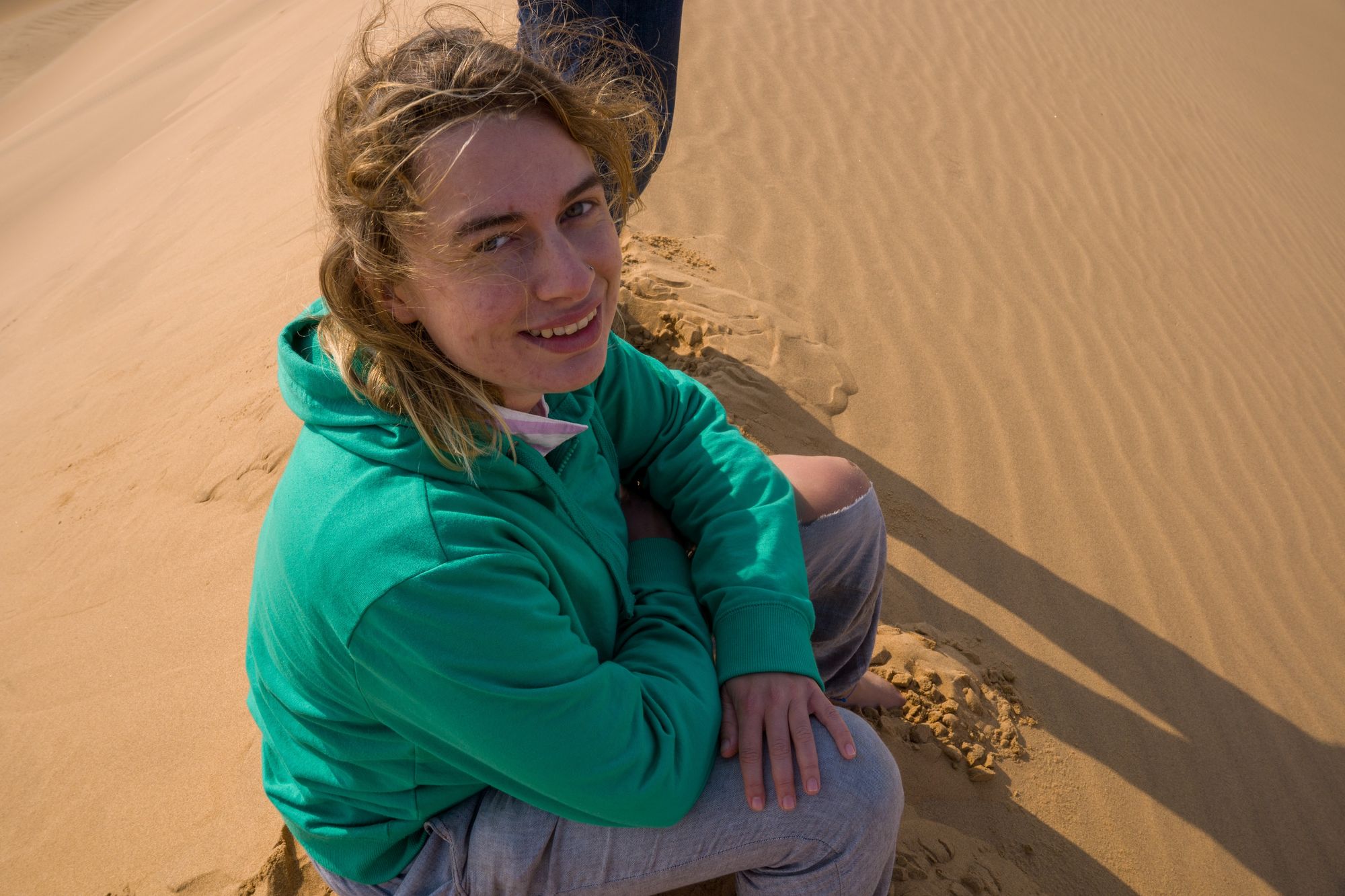
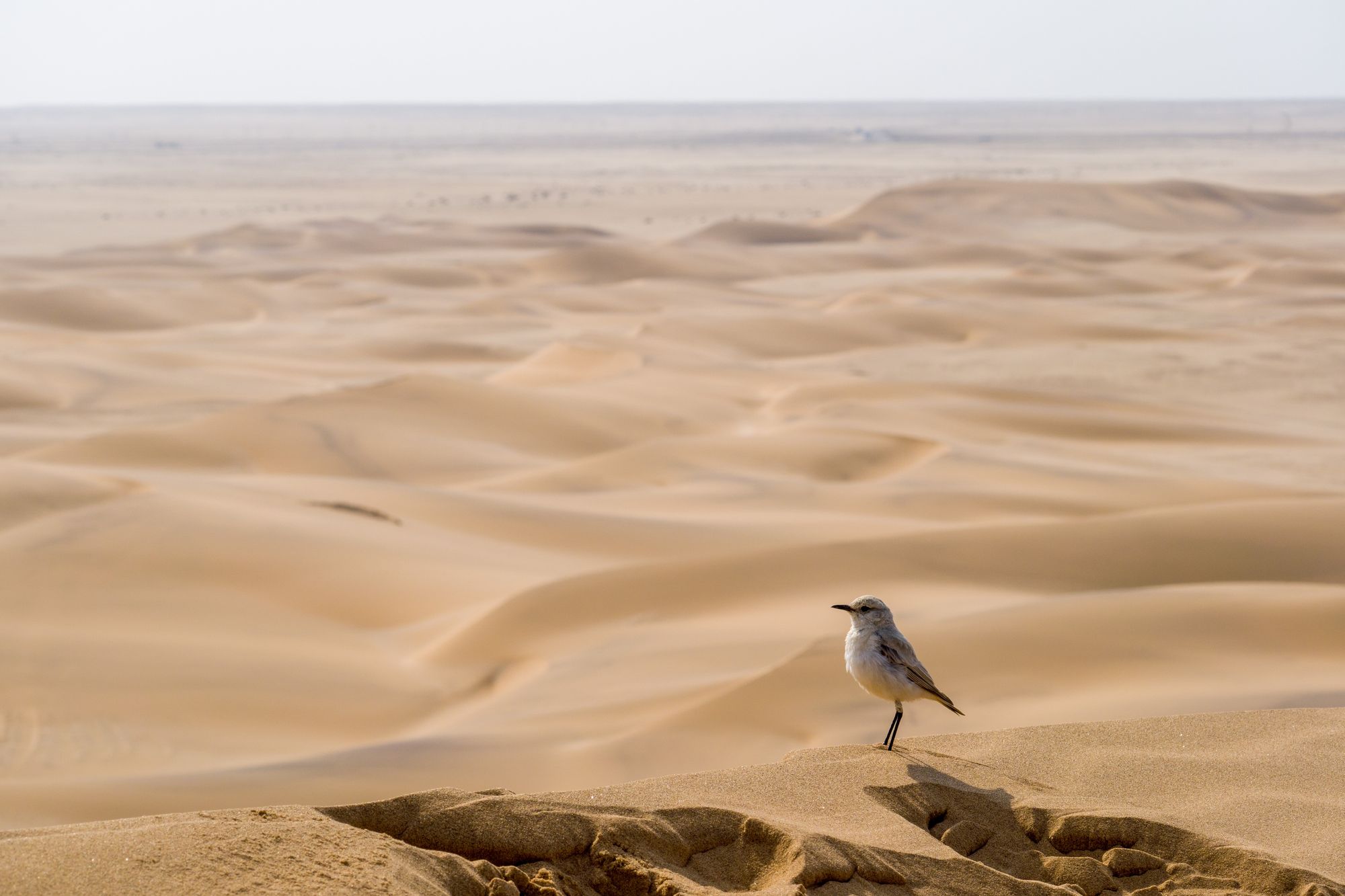
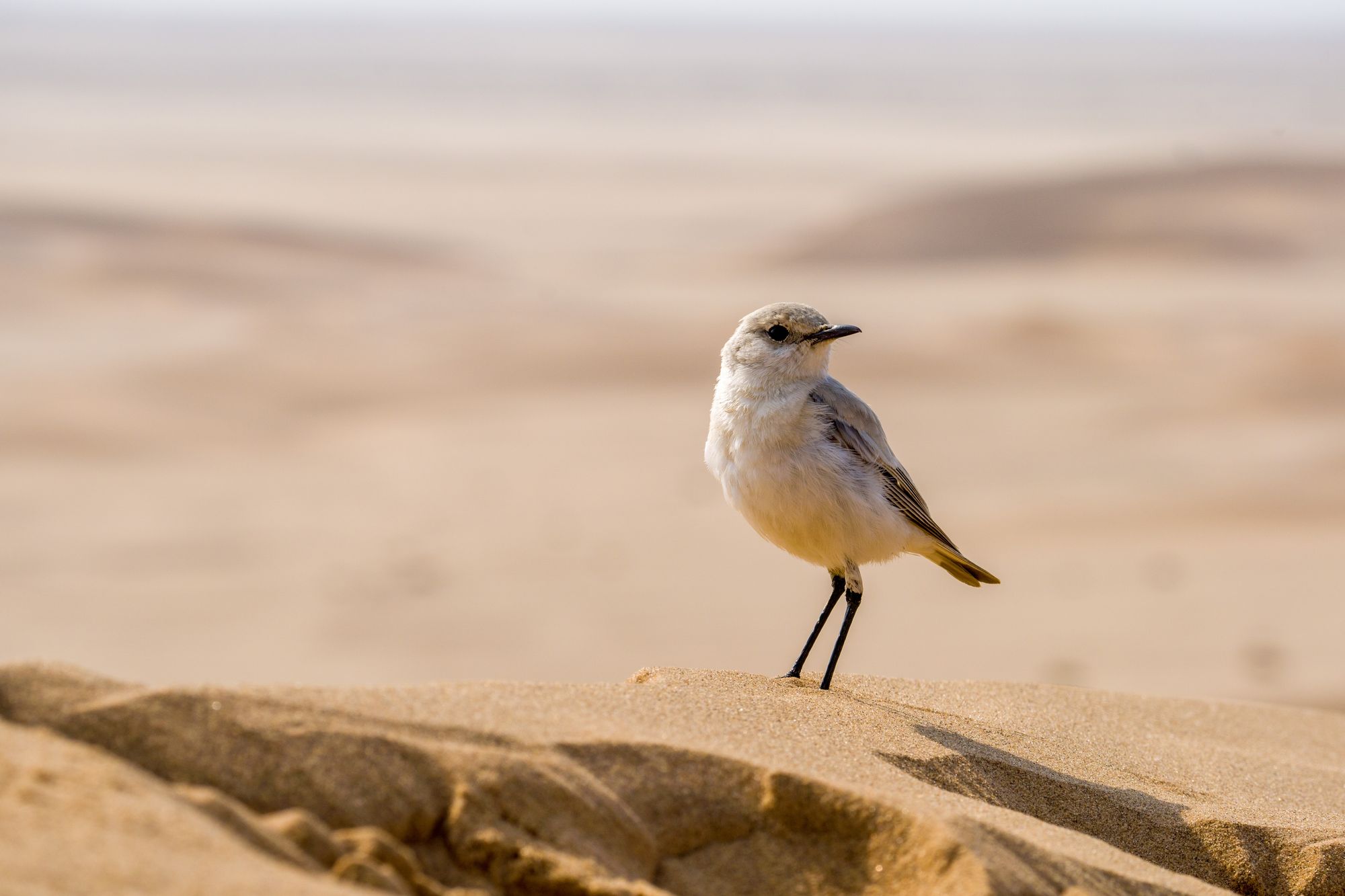
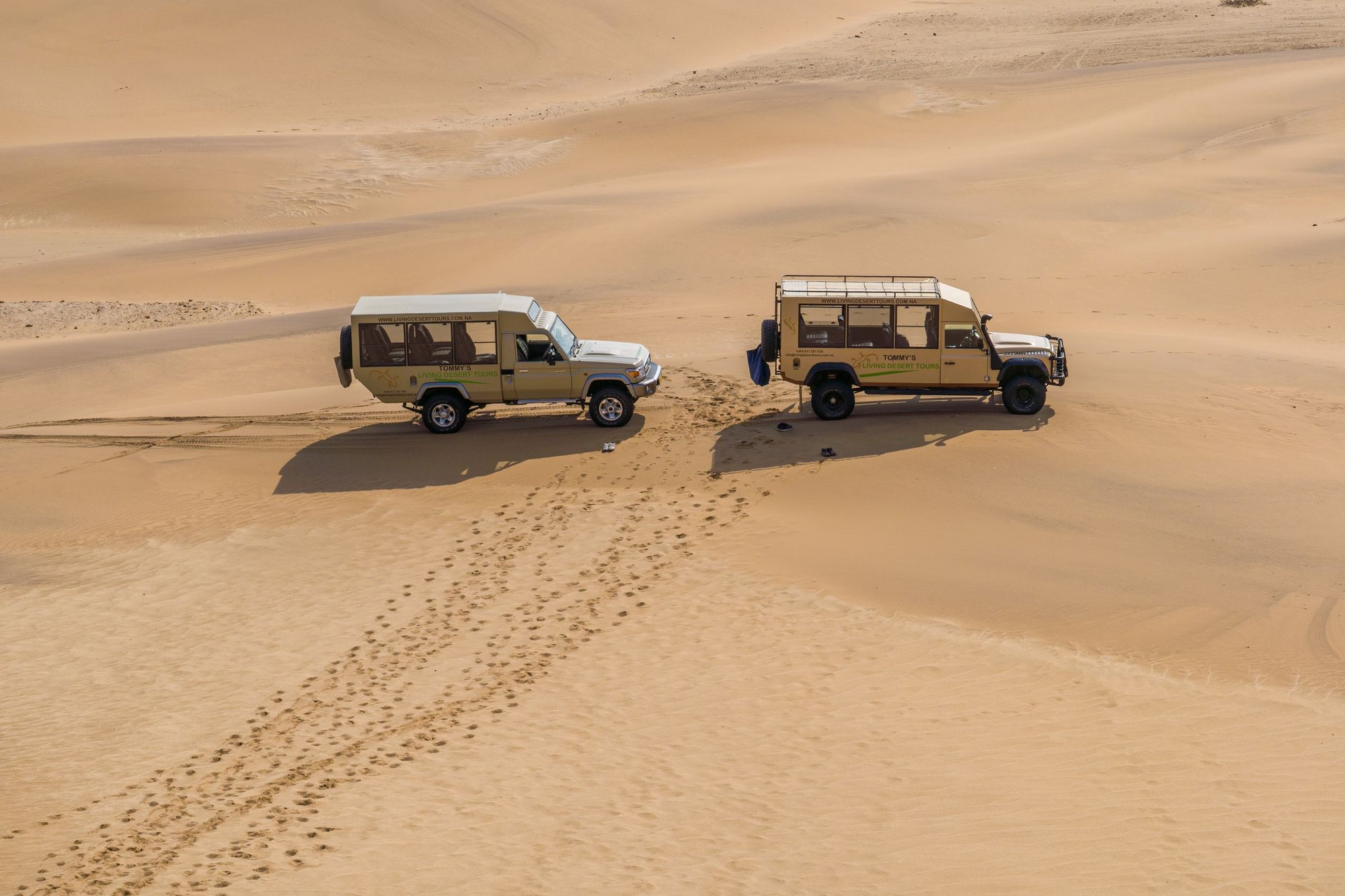
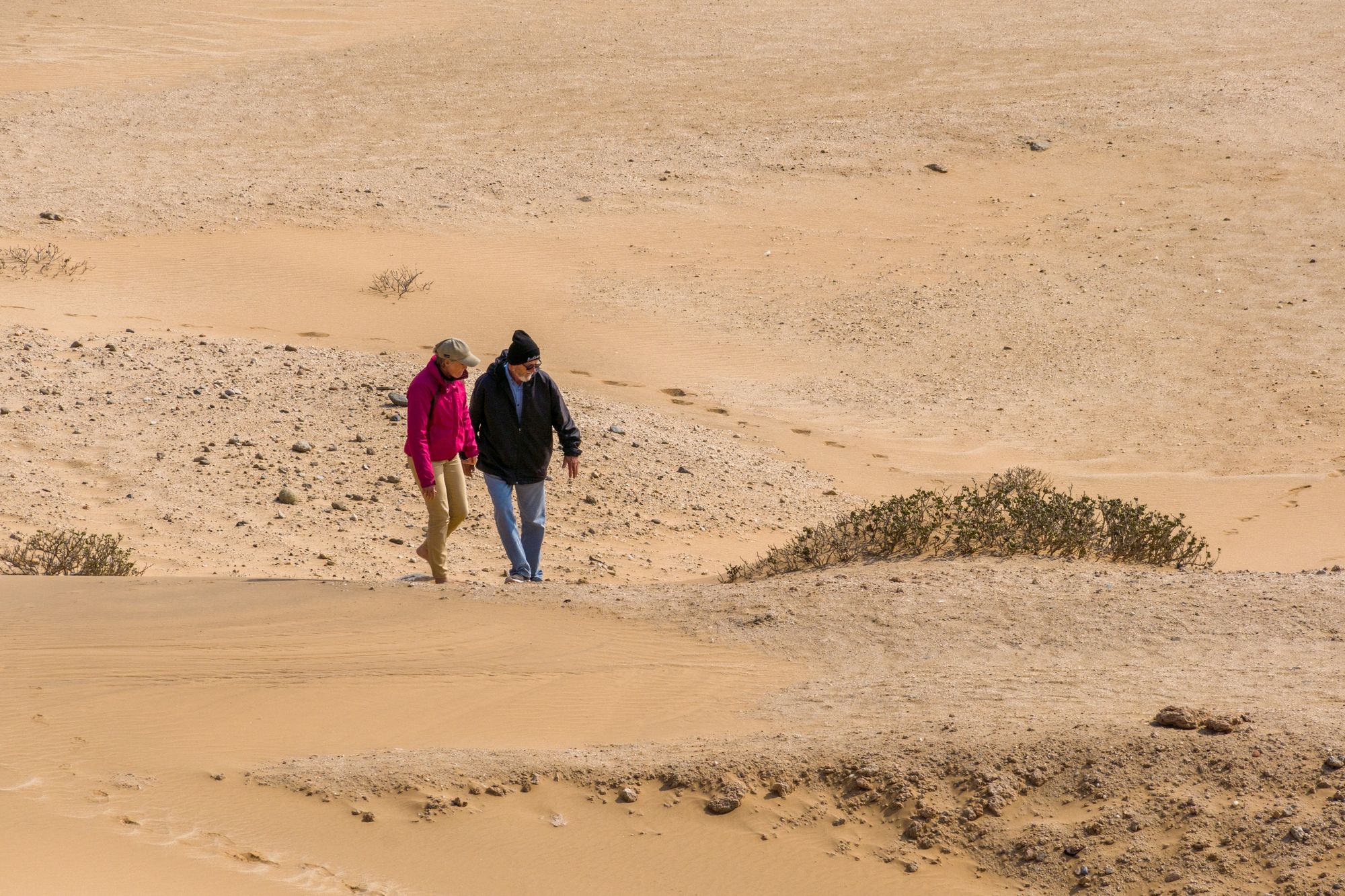
We also stopped at a desert toilet that has been put there by the tour people. There we could feed some of the birds with mealworms and they even fly up to peoples hands to fetch the food.
Afterwards we got a quick physics demonstration. Lots of the sand in the dunes contains Iron Oxide. This is also the reason why the sand in Sesriem looked a lot more red than here, as the sand here comes from the ocean and did not have so much time to rust yet. While the sand is traveling further into the country it rusts more and gets a more reddish color. If you take a magnet and move it over the sand you get all the iron oxide particles sticking to it.
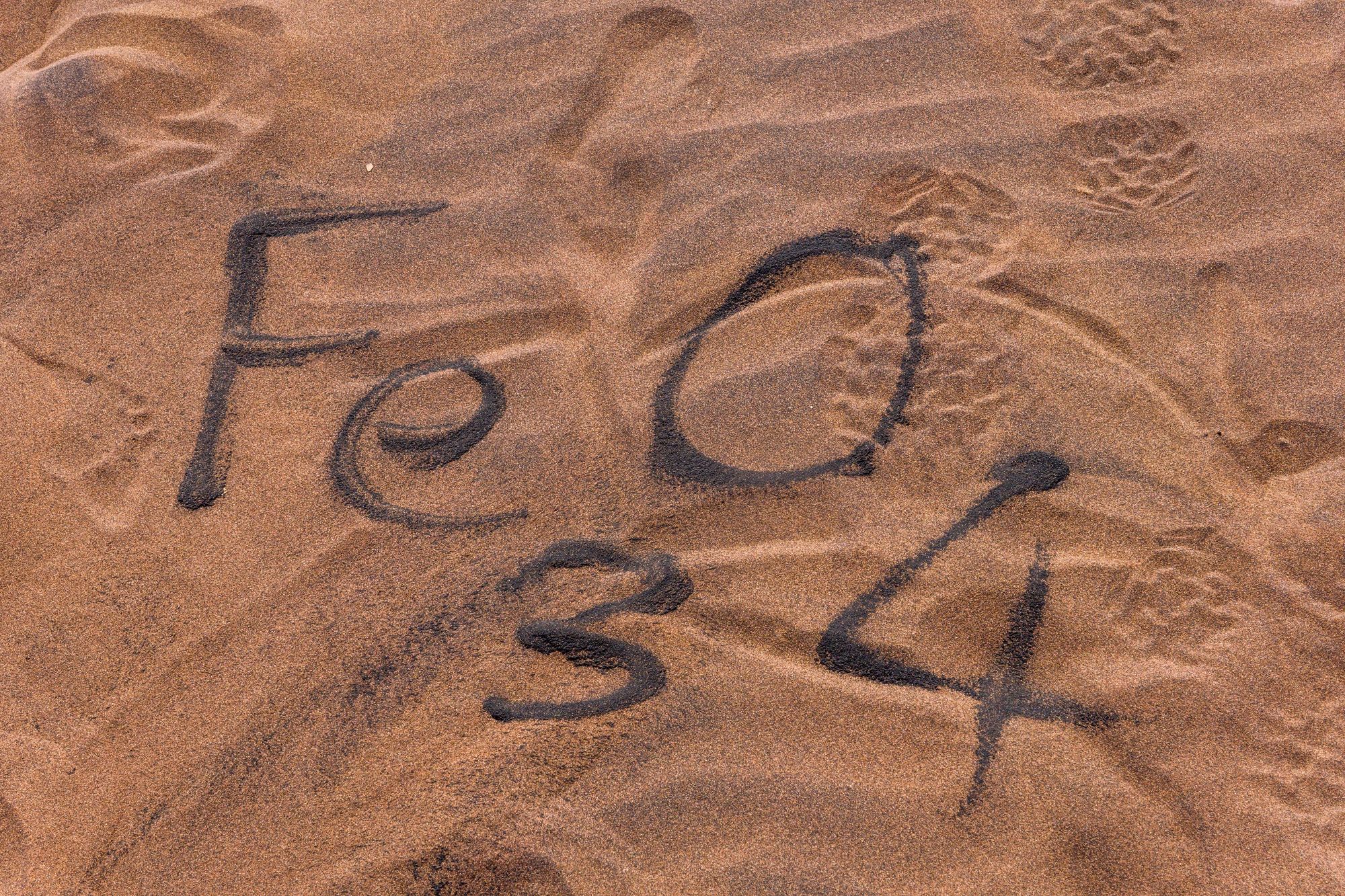
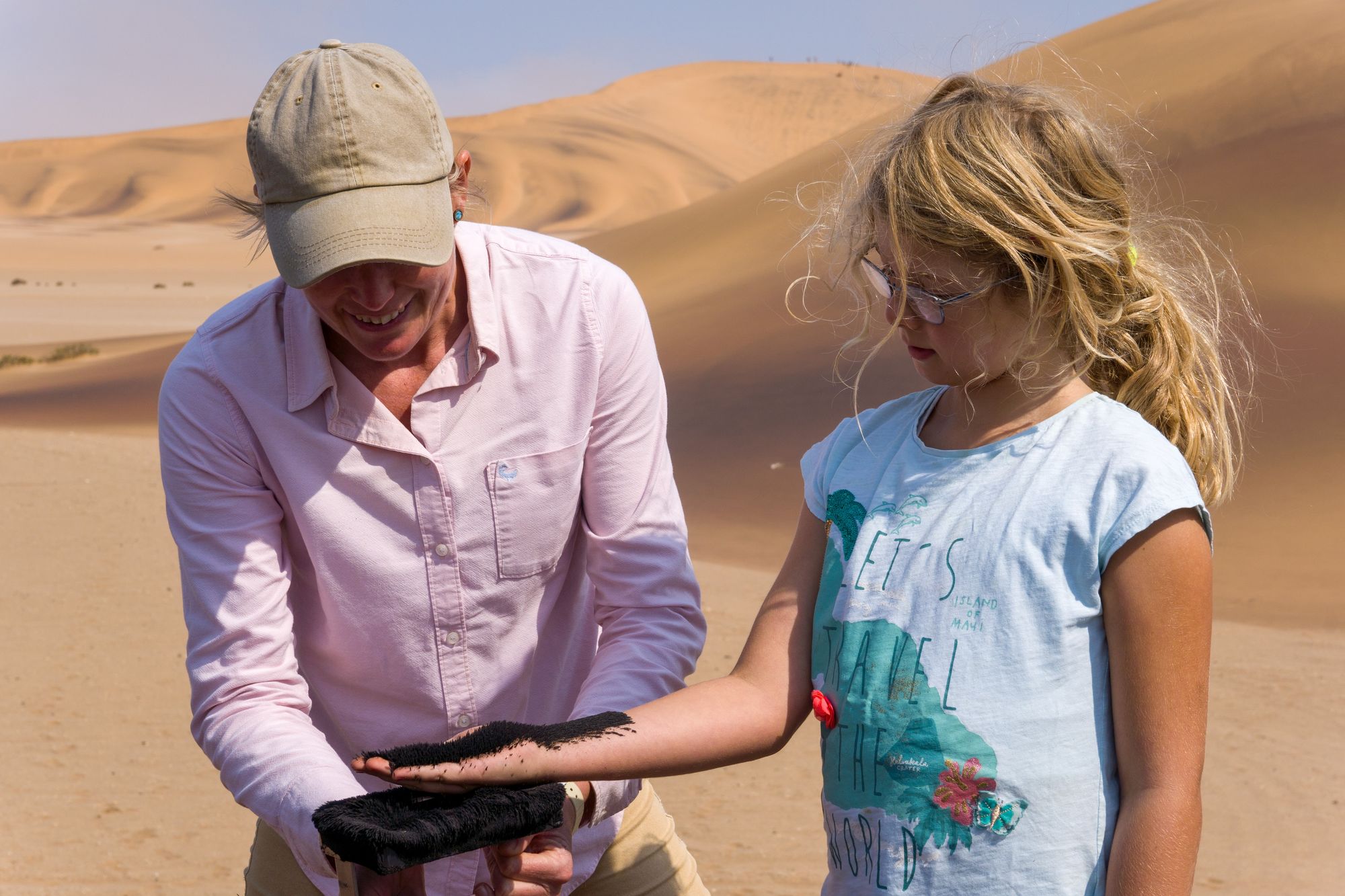
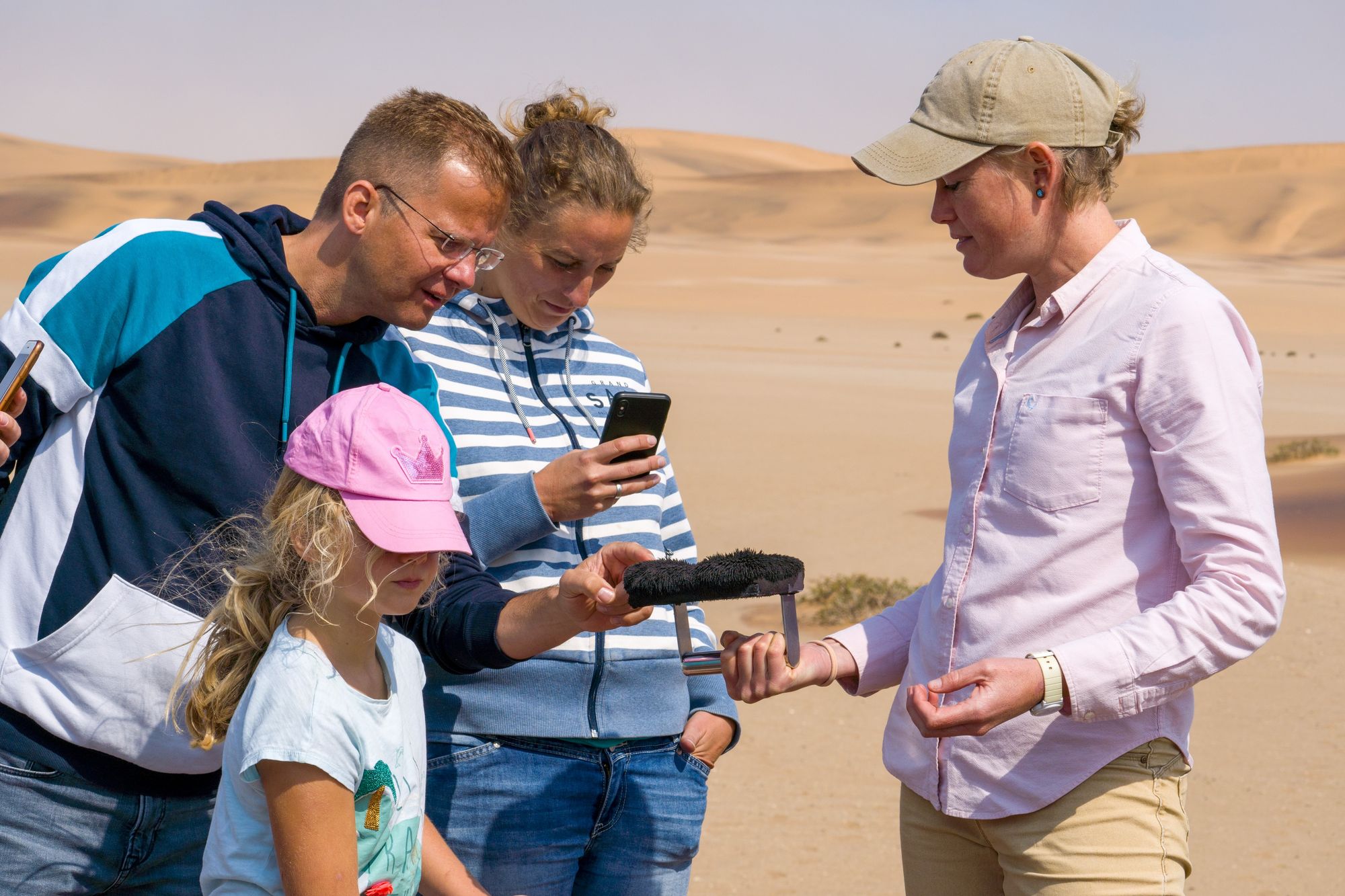
Another experiment was to put some water into the sand and dig out a piece. This reveals the layer structure that makes up the dune. Bianca showed us also how this looks when the sand is dug up freshly, showing that there are no layers then.
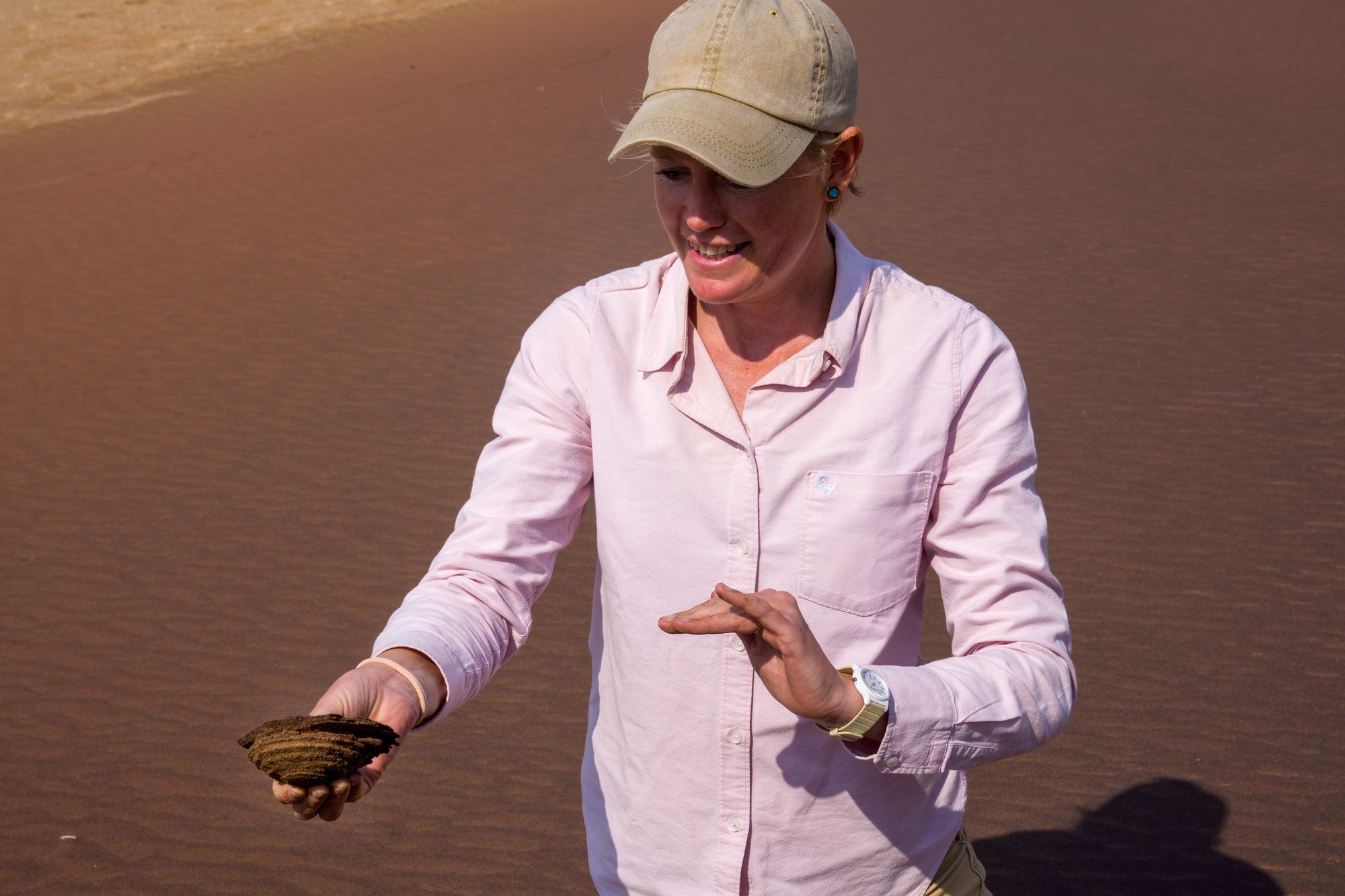
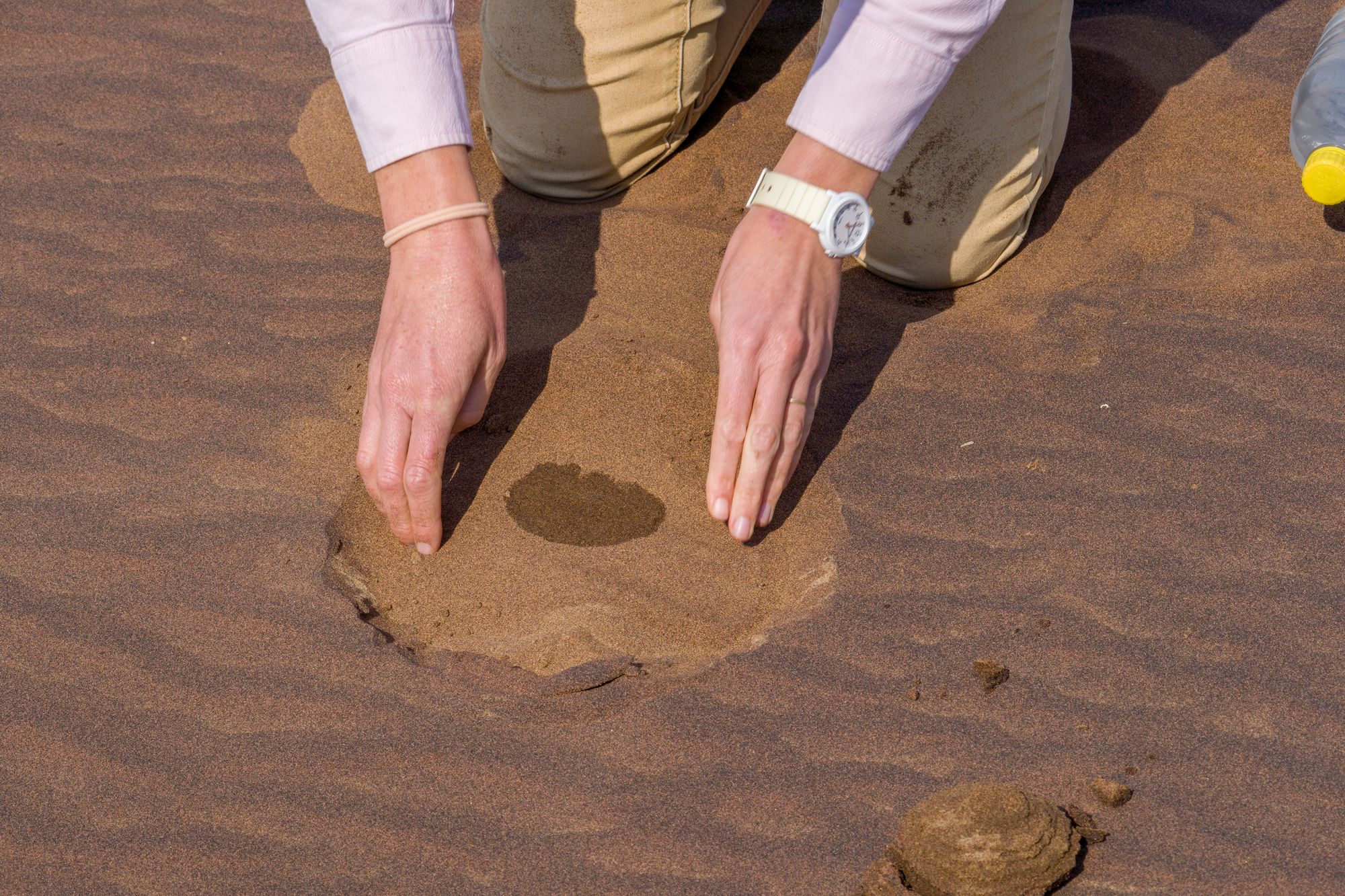
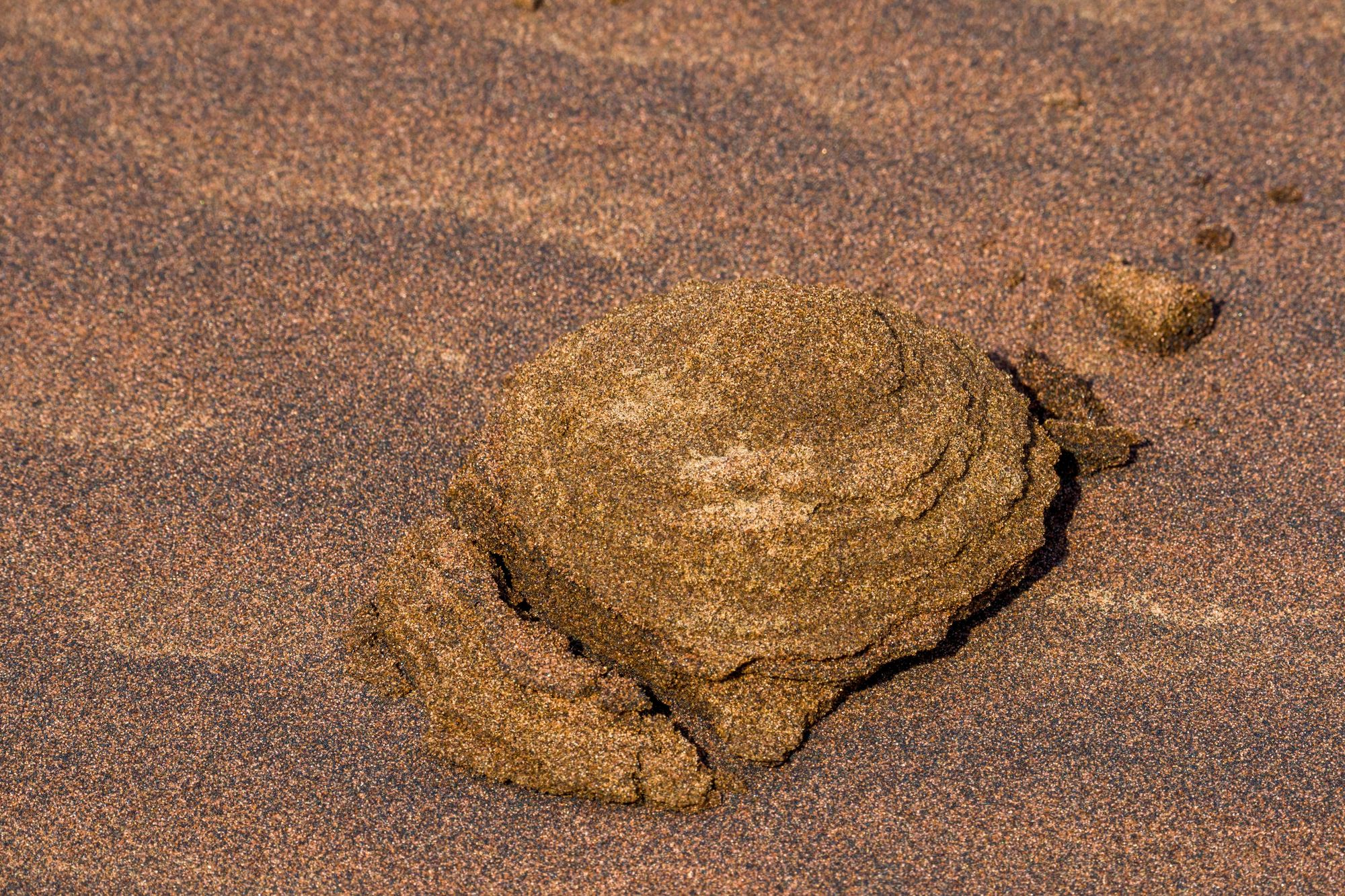
For a final stop Bianca parked the car right to the edge of a dune from where we could see the ocean, and also take lots of awesome pictures.
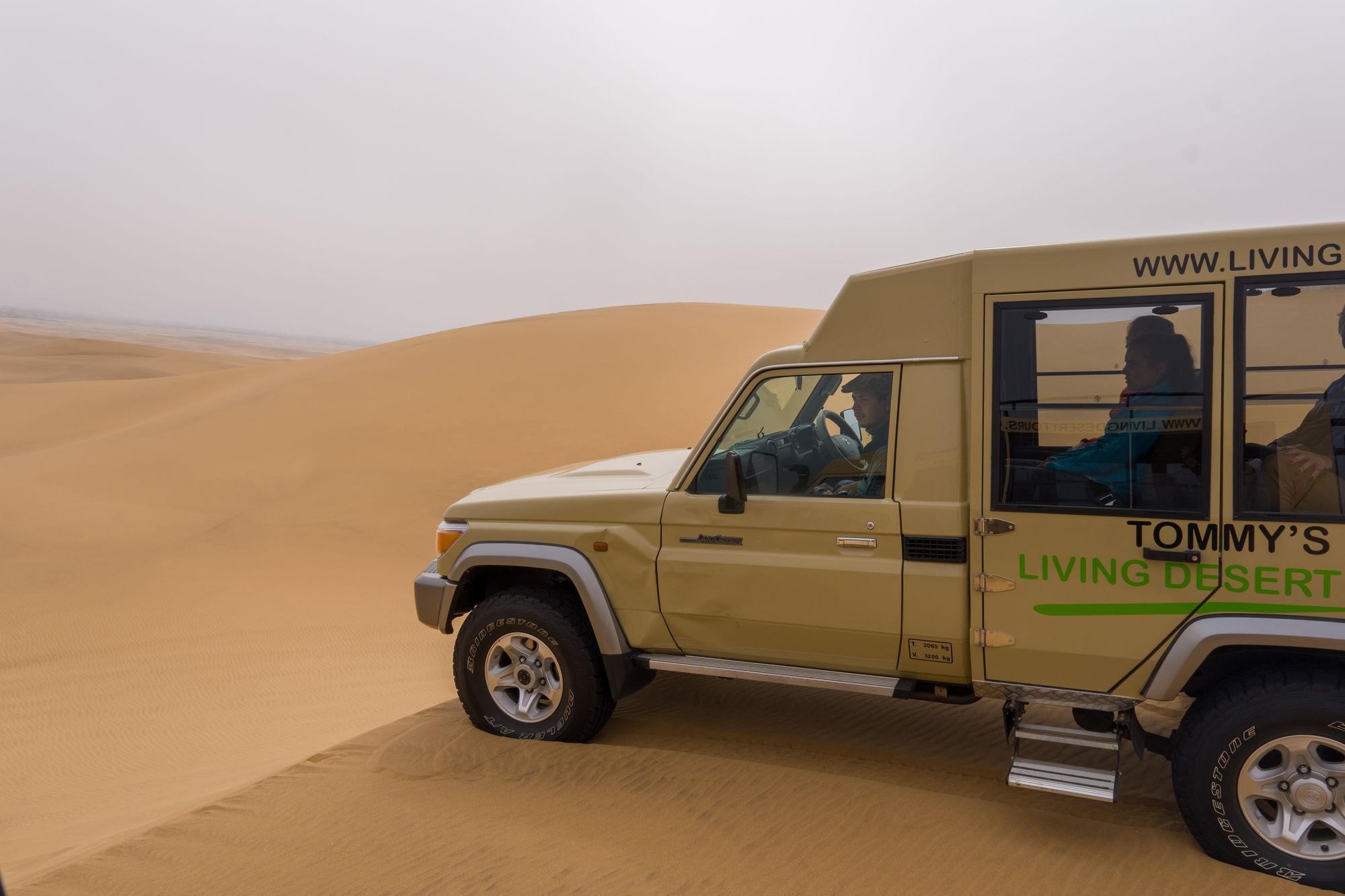
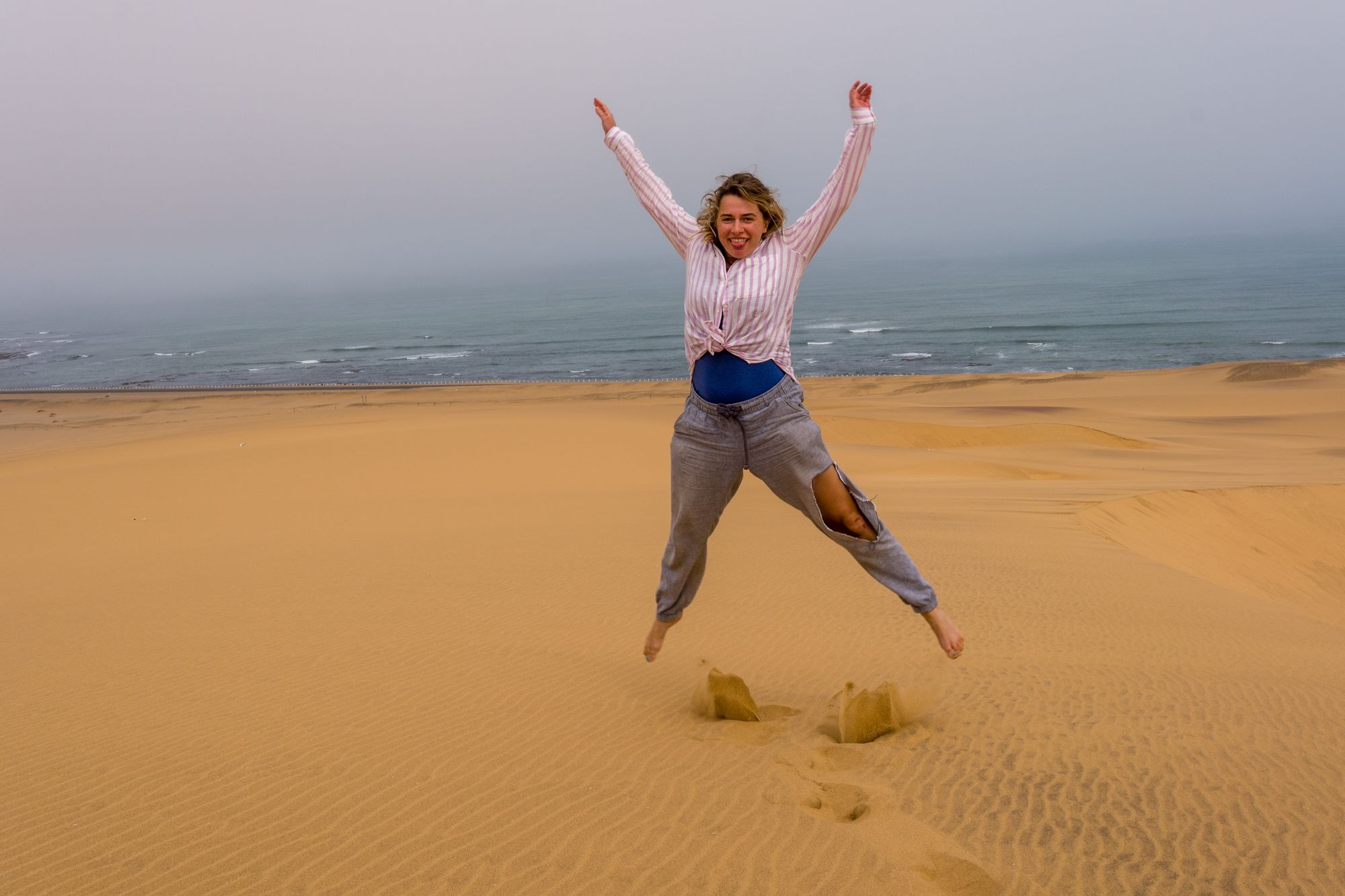
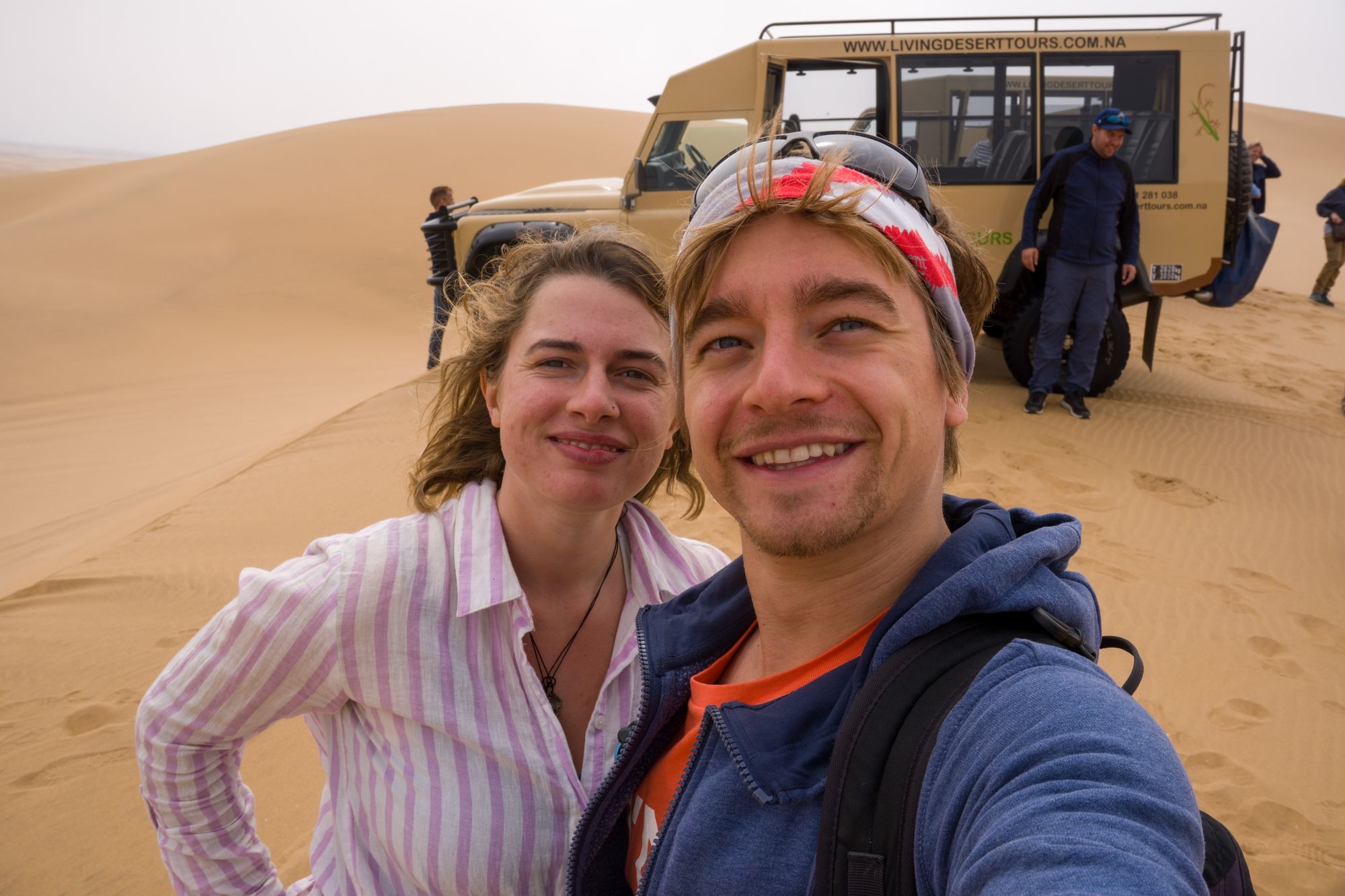
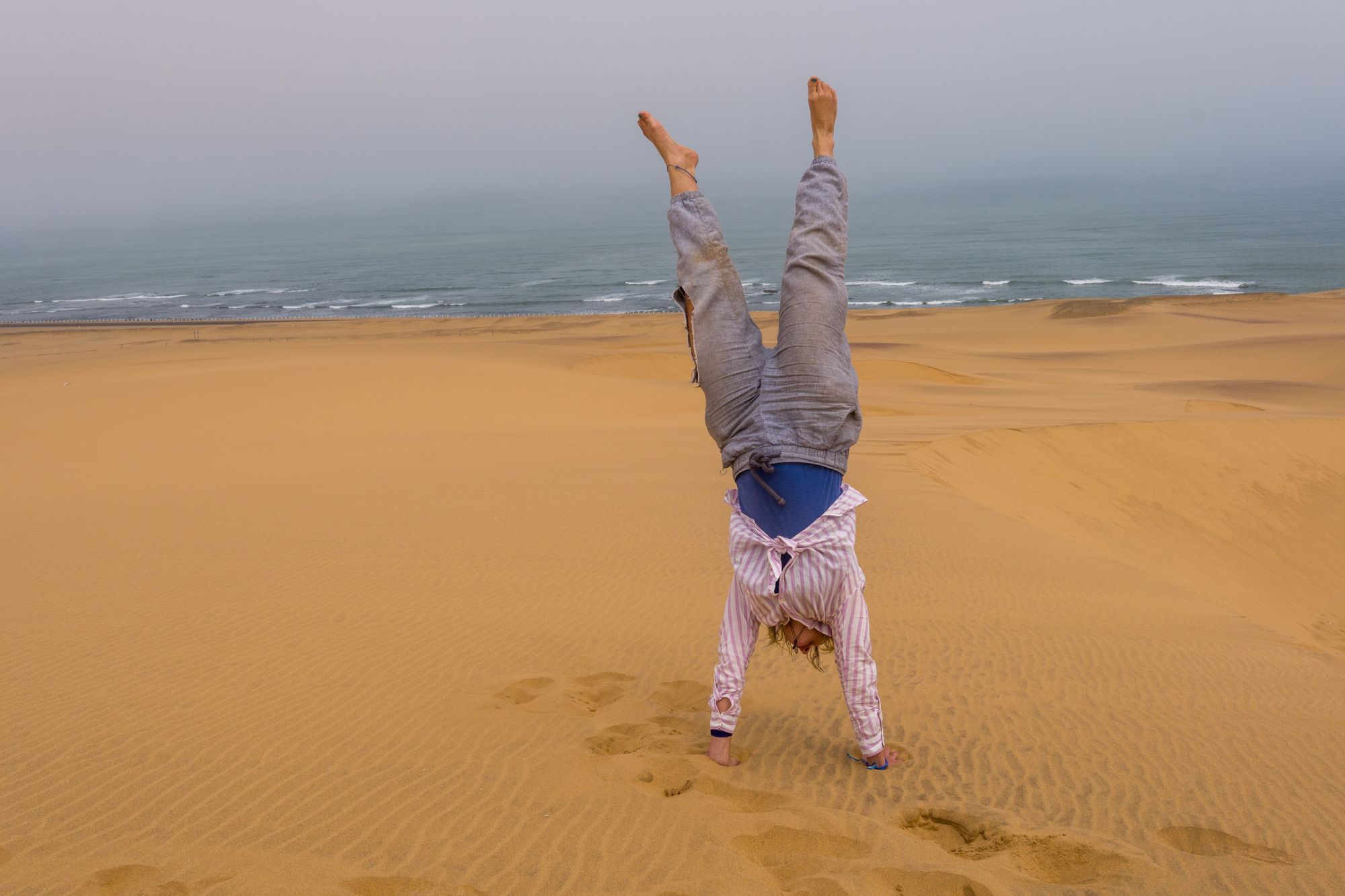
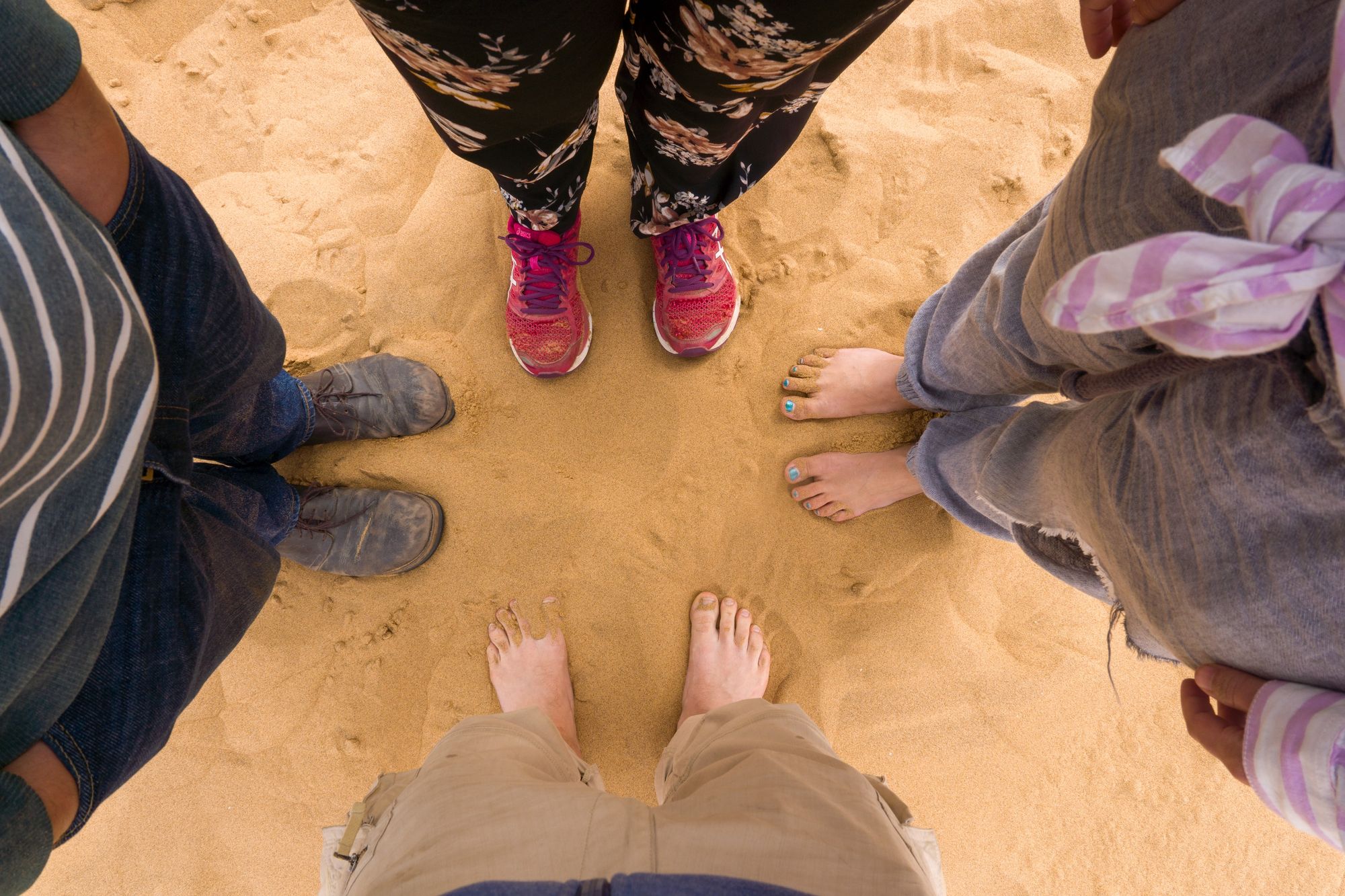
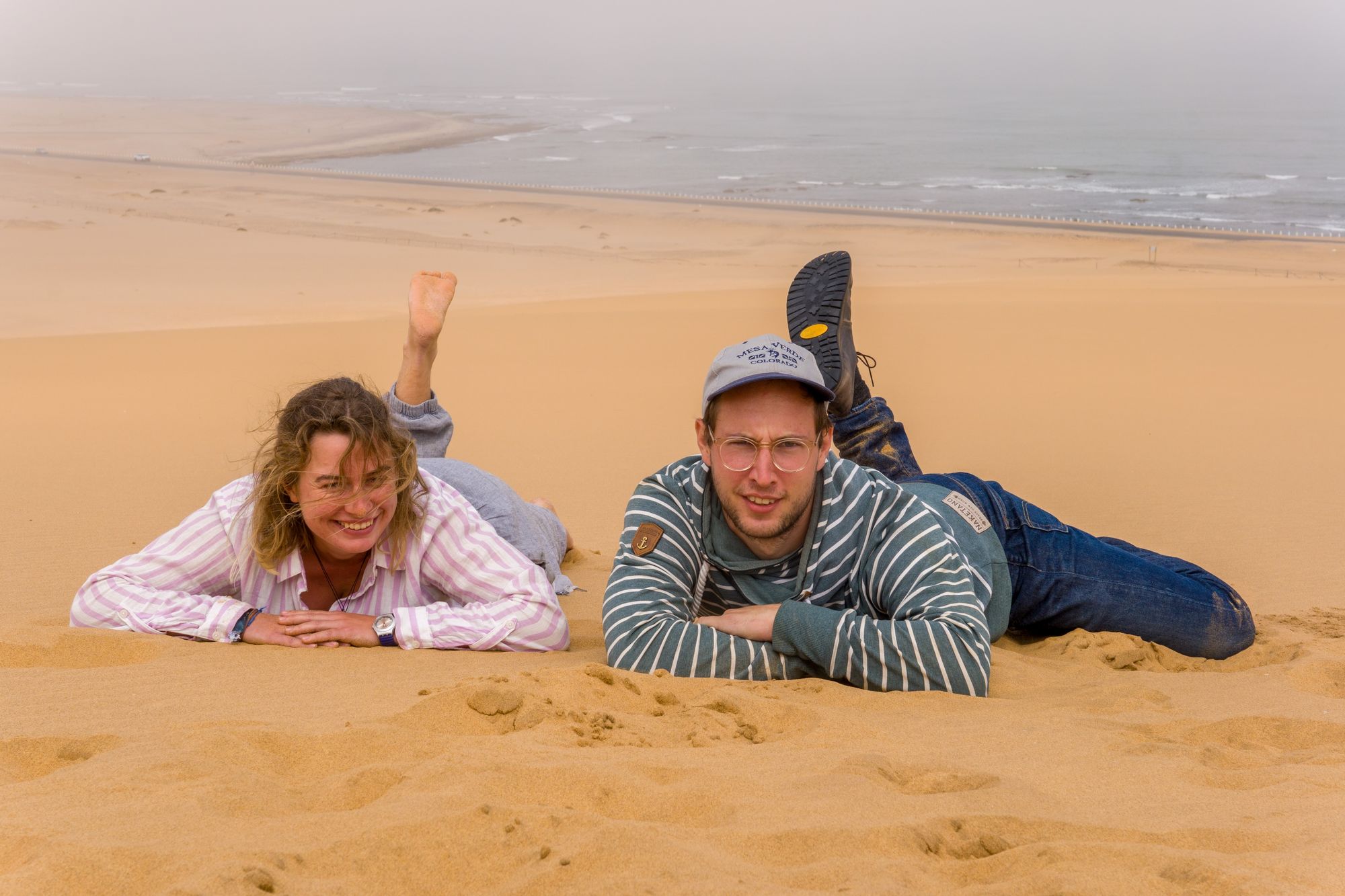
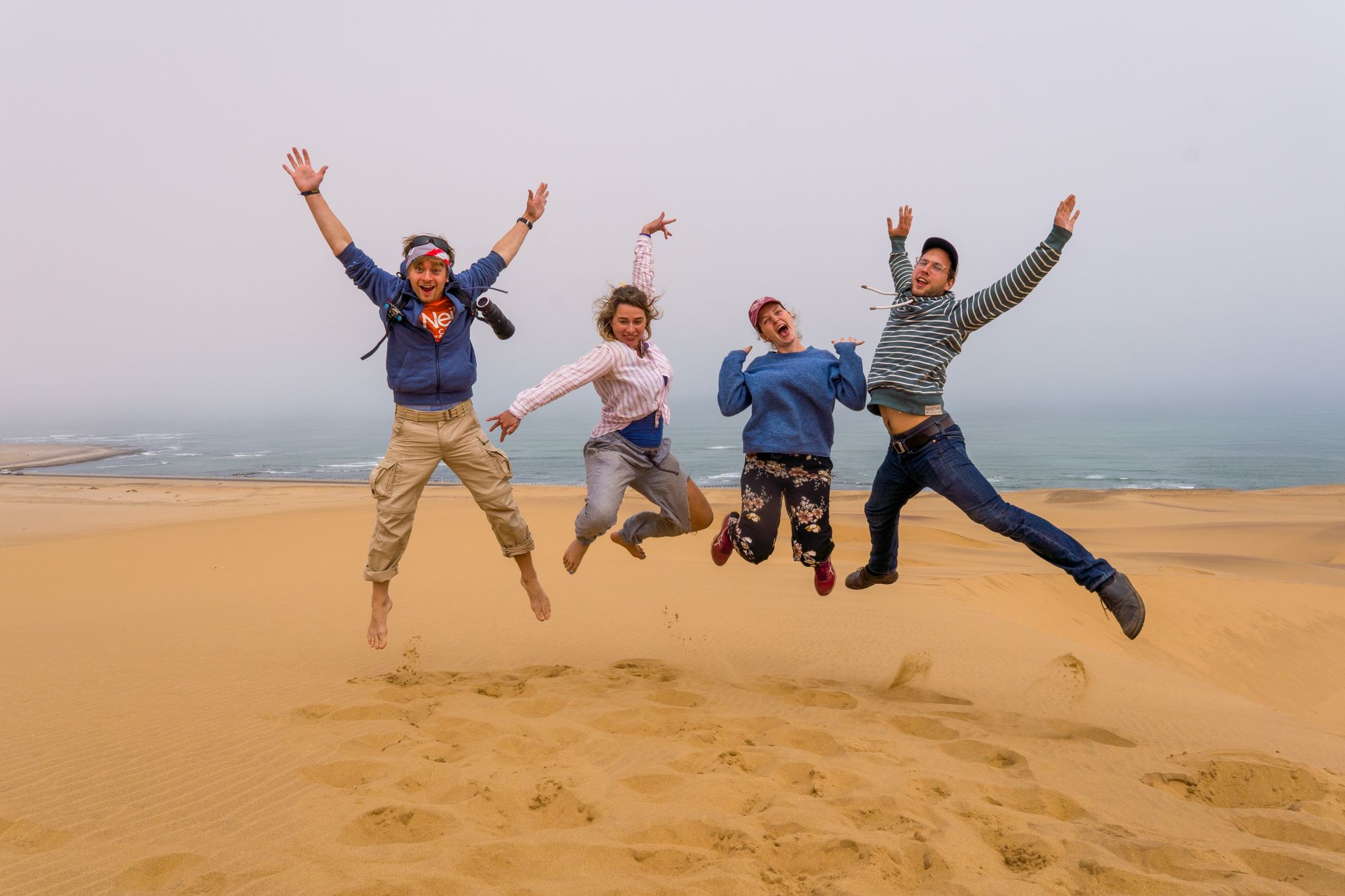
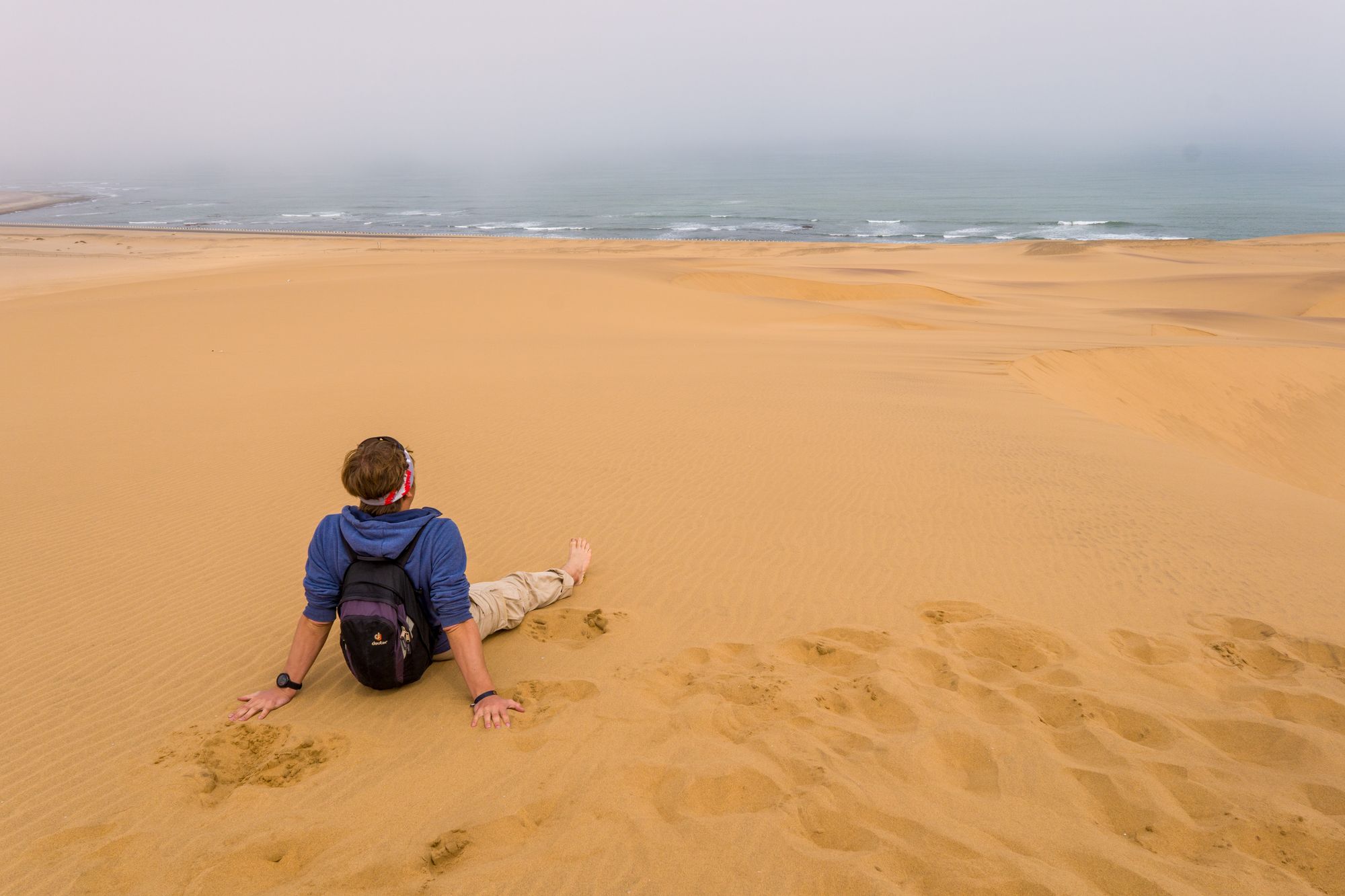
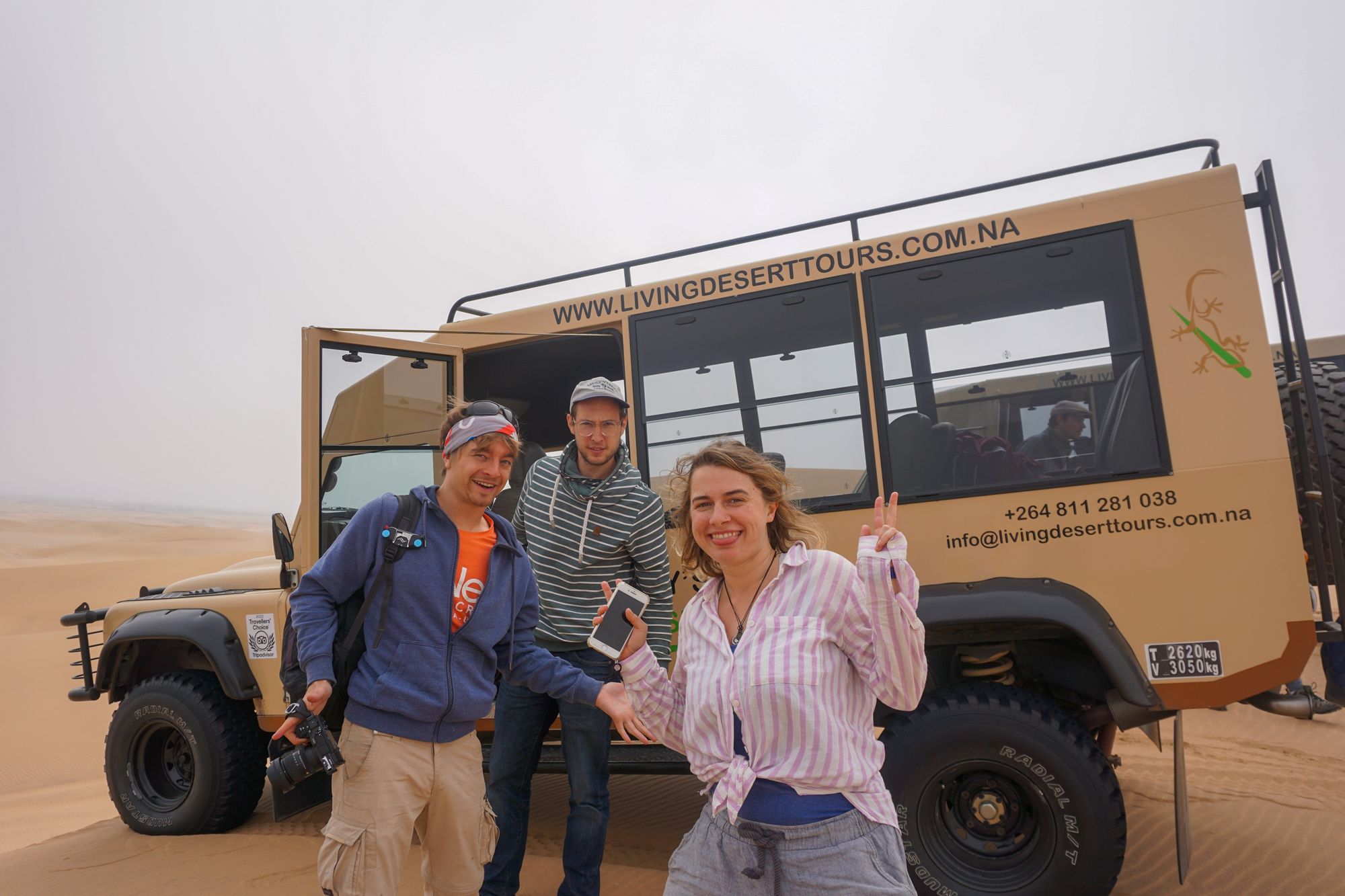
After the tour finished we headed onward on the road, next stop: Uis 🚗
